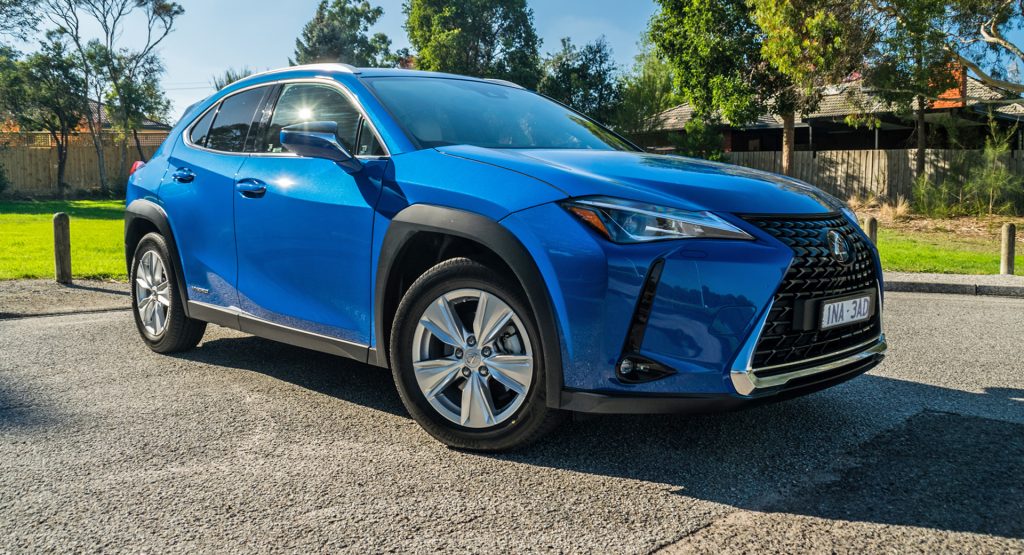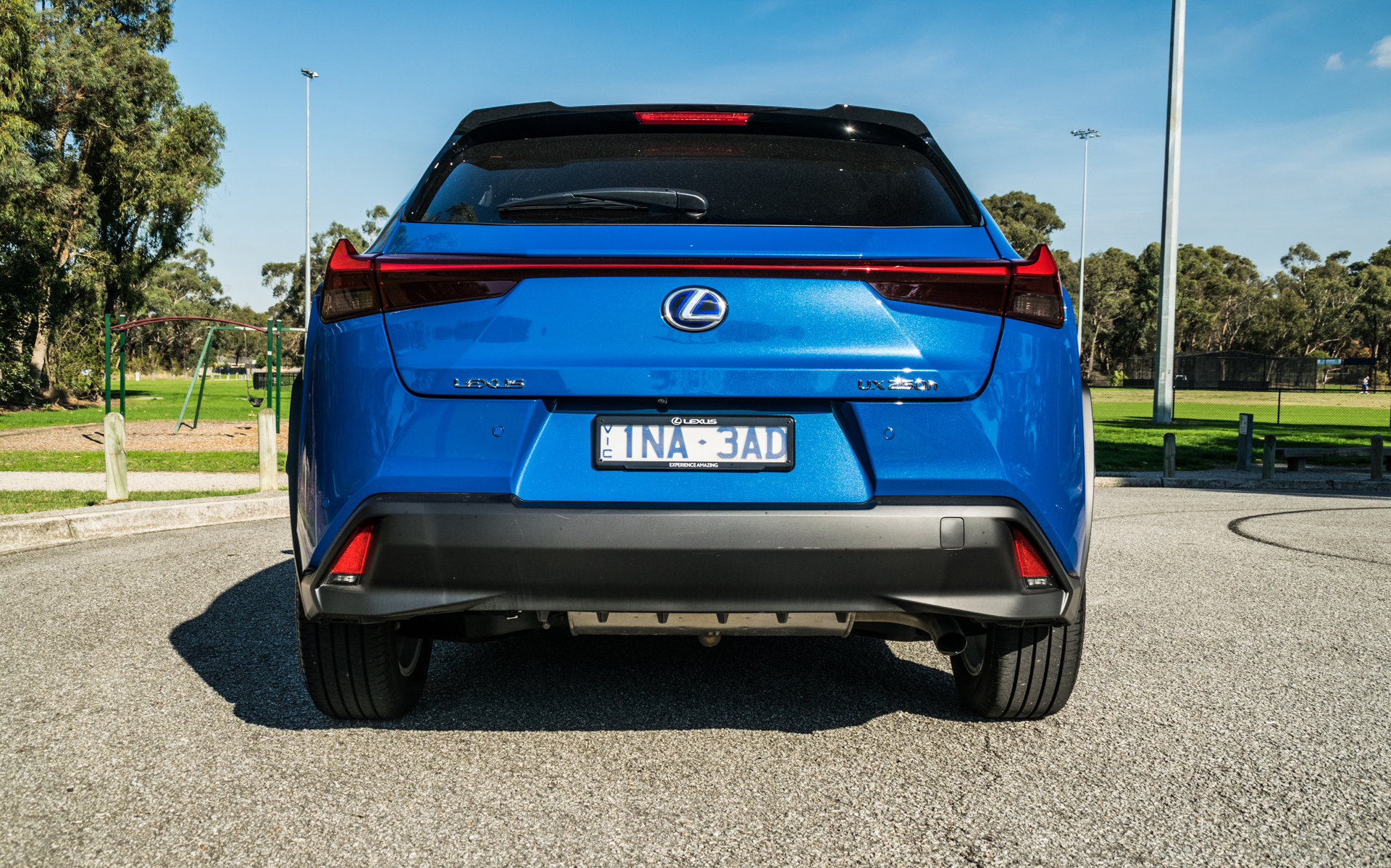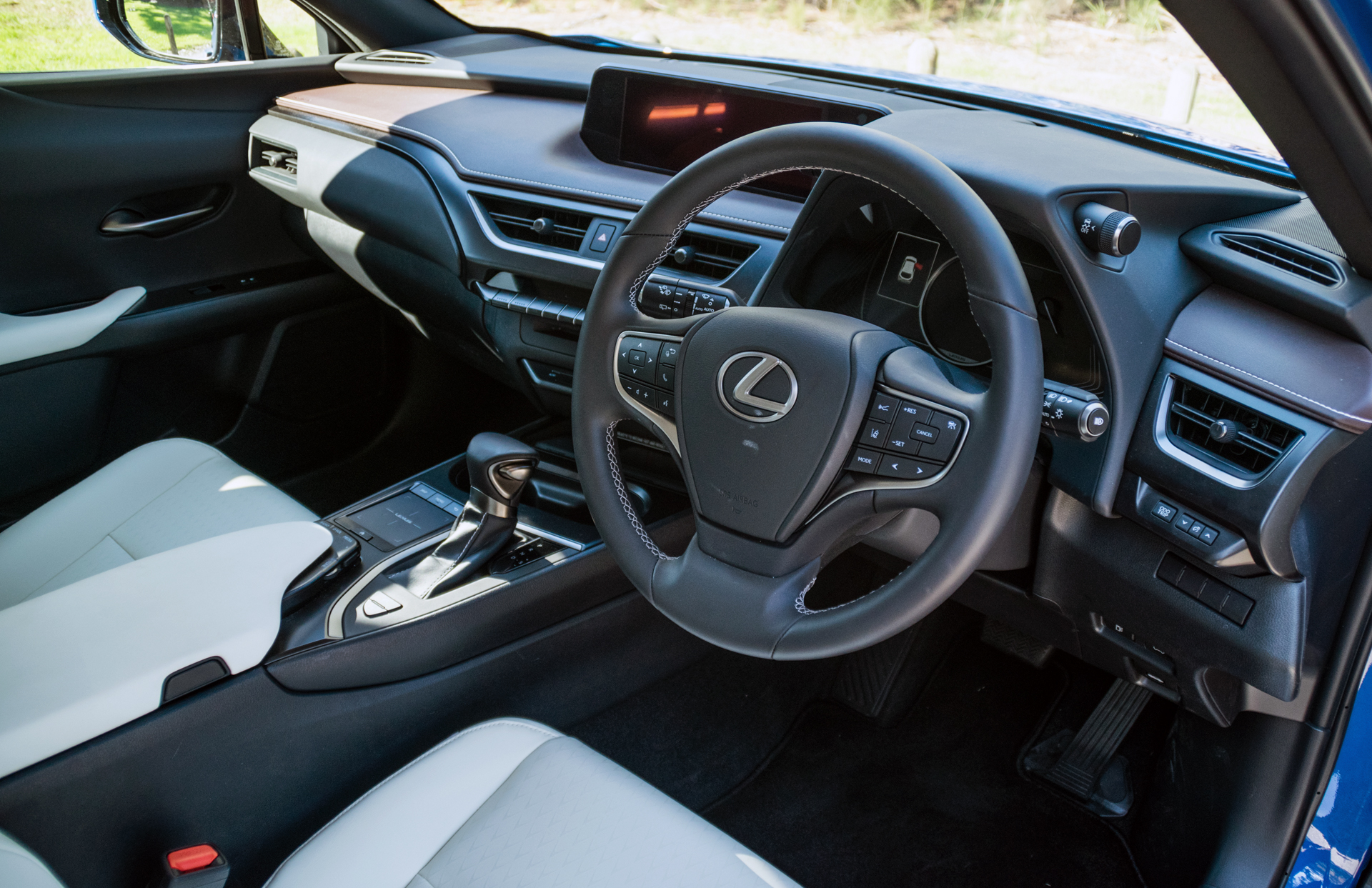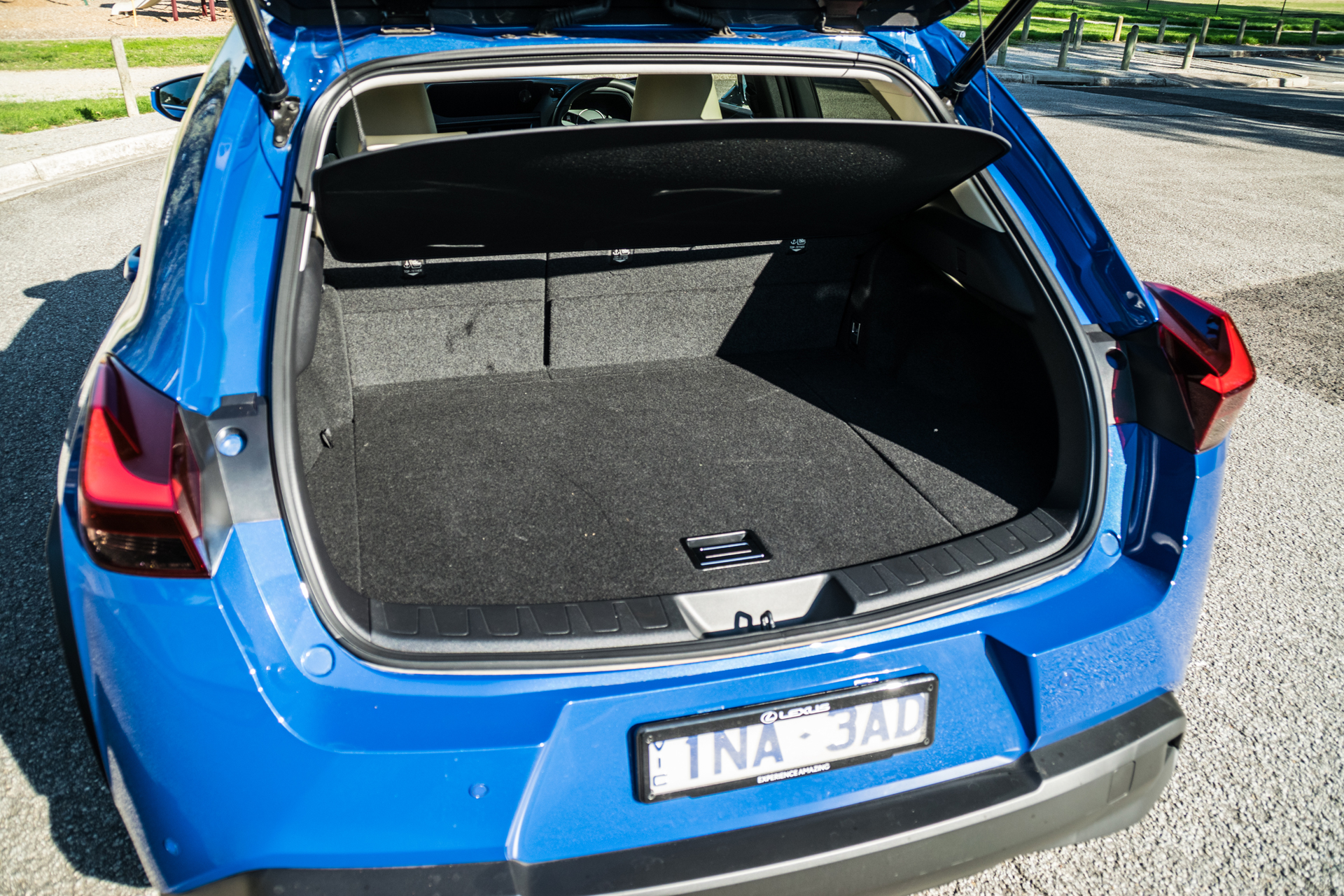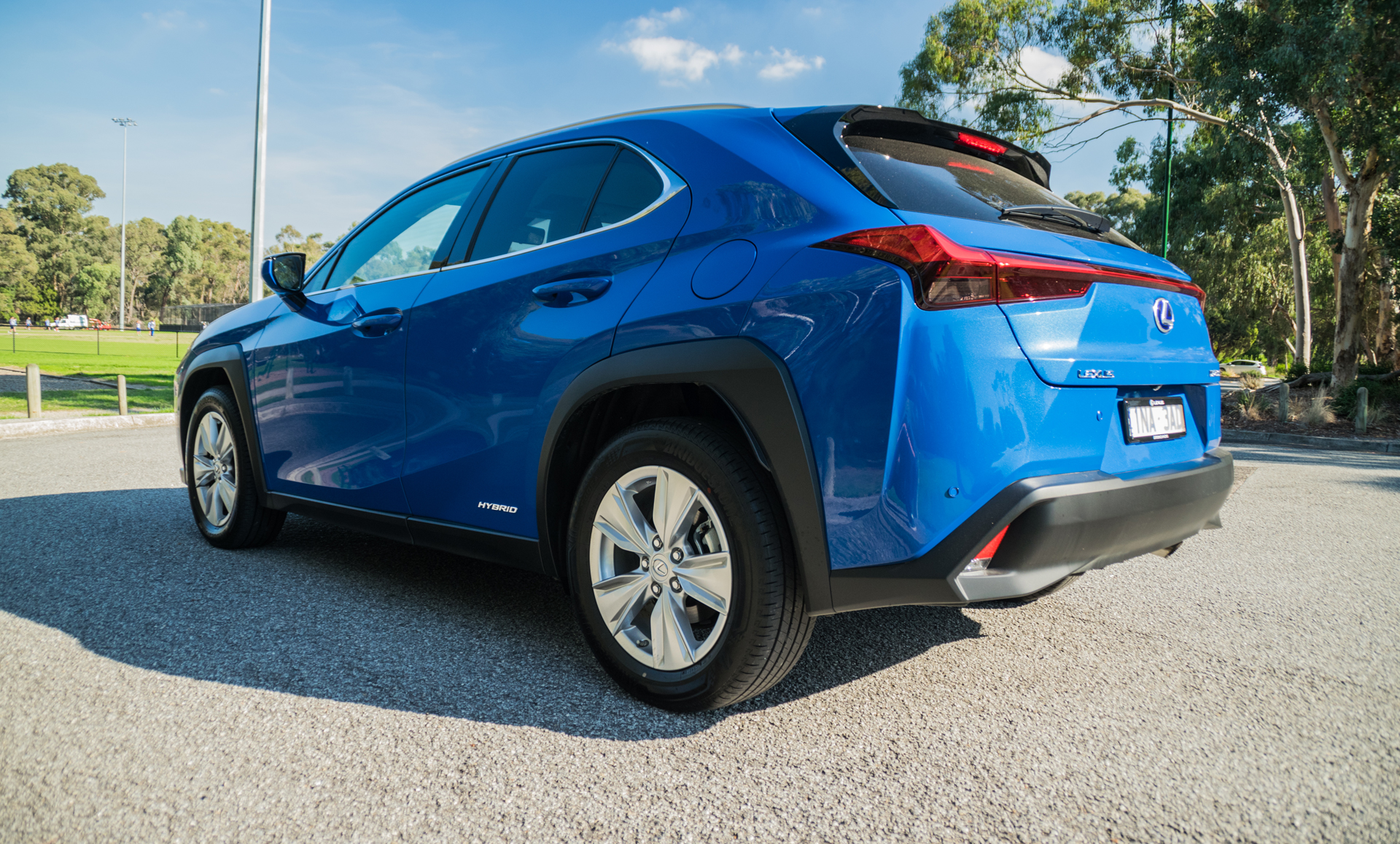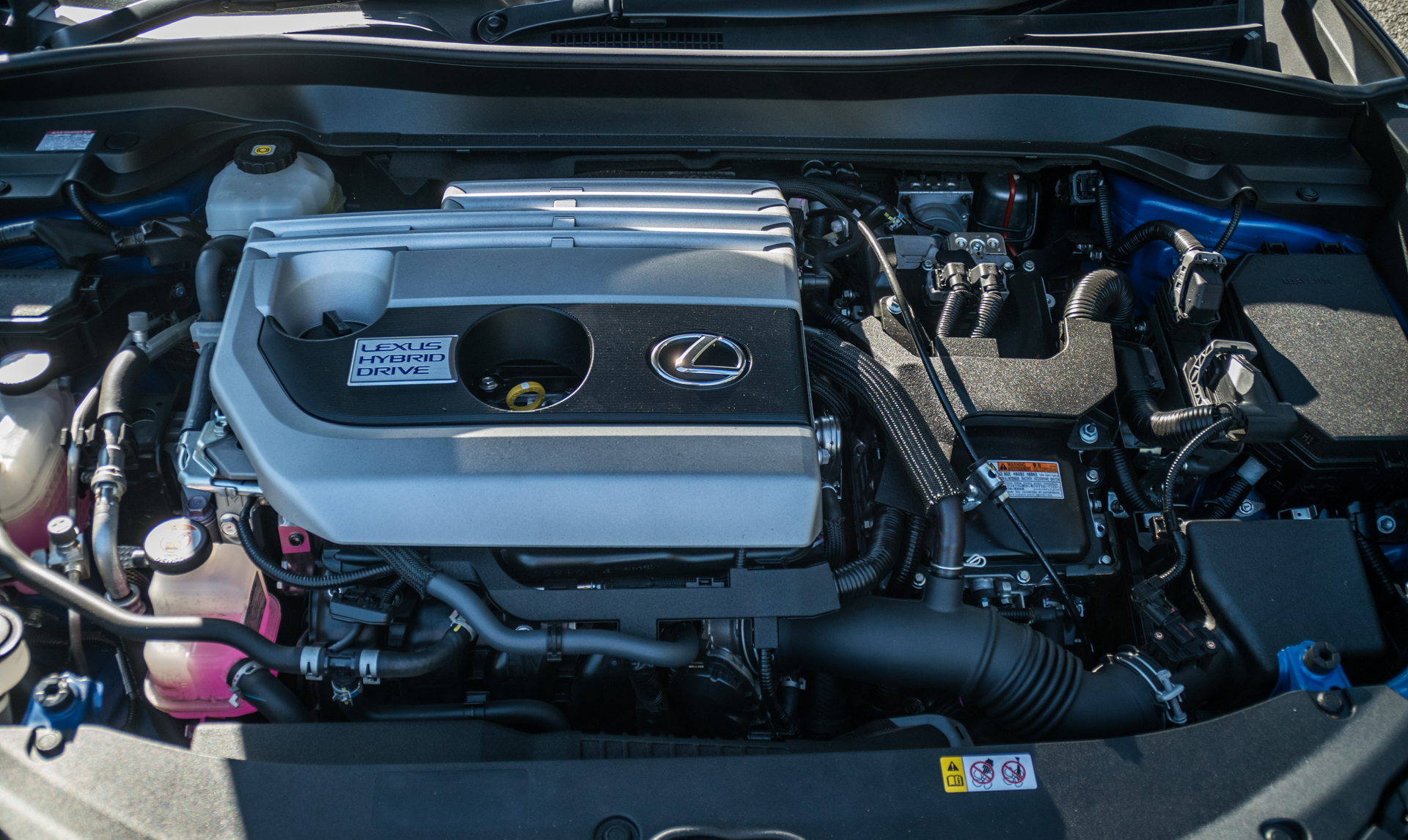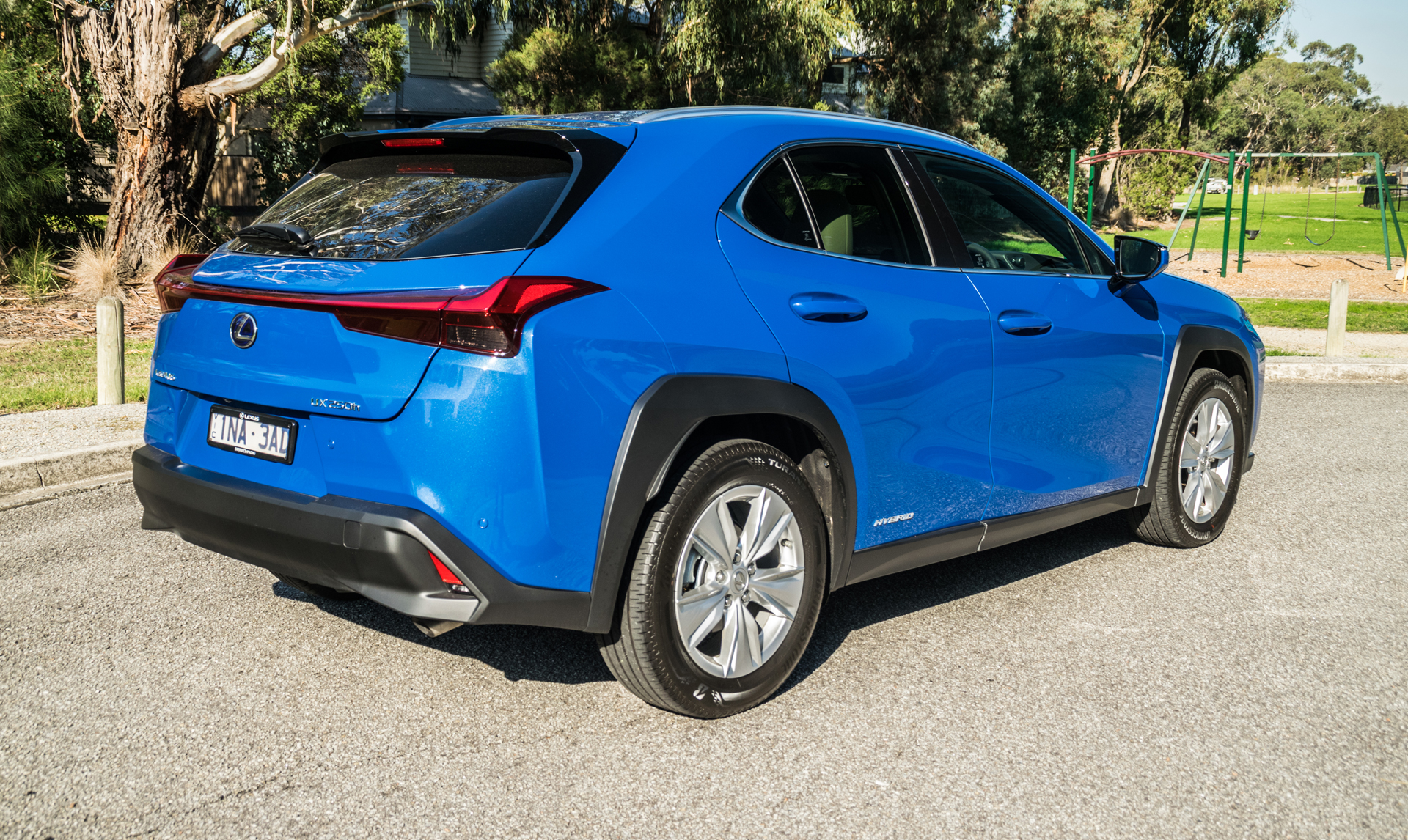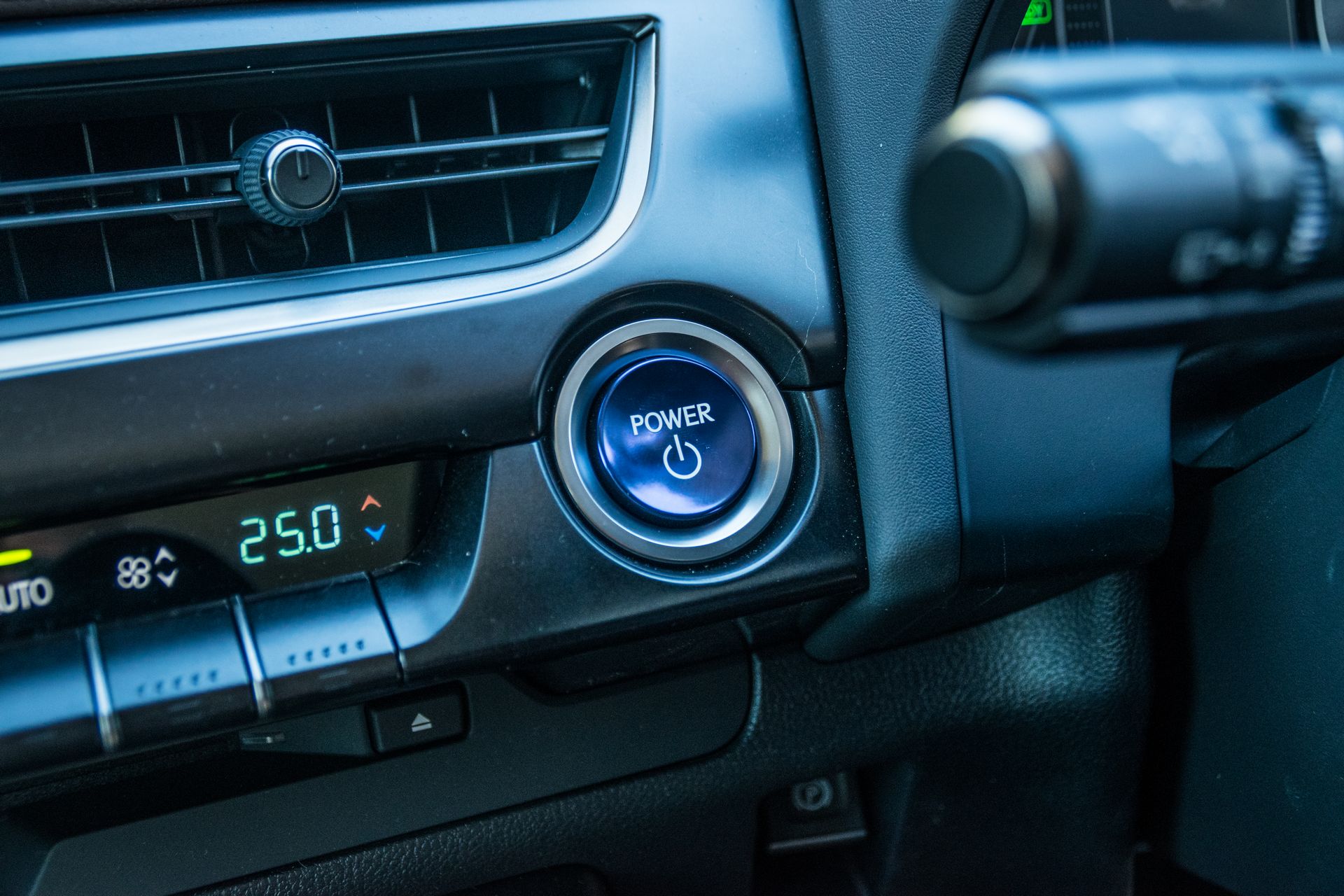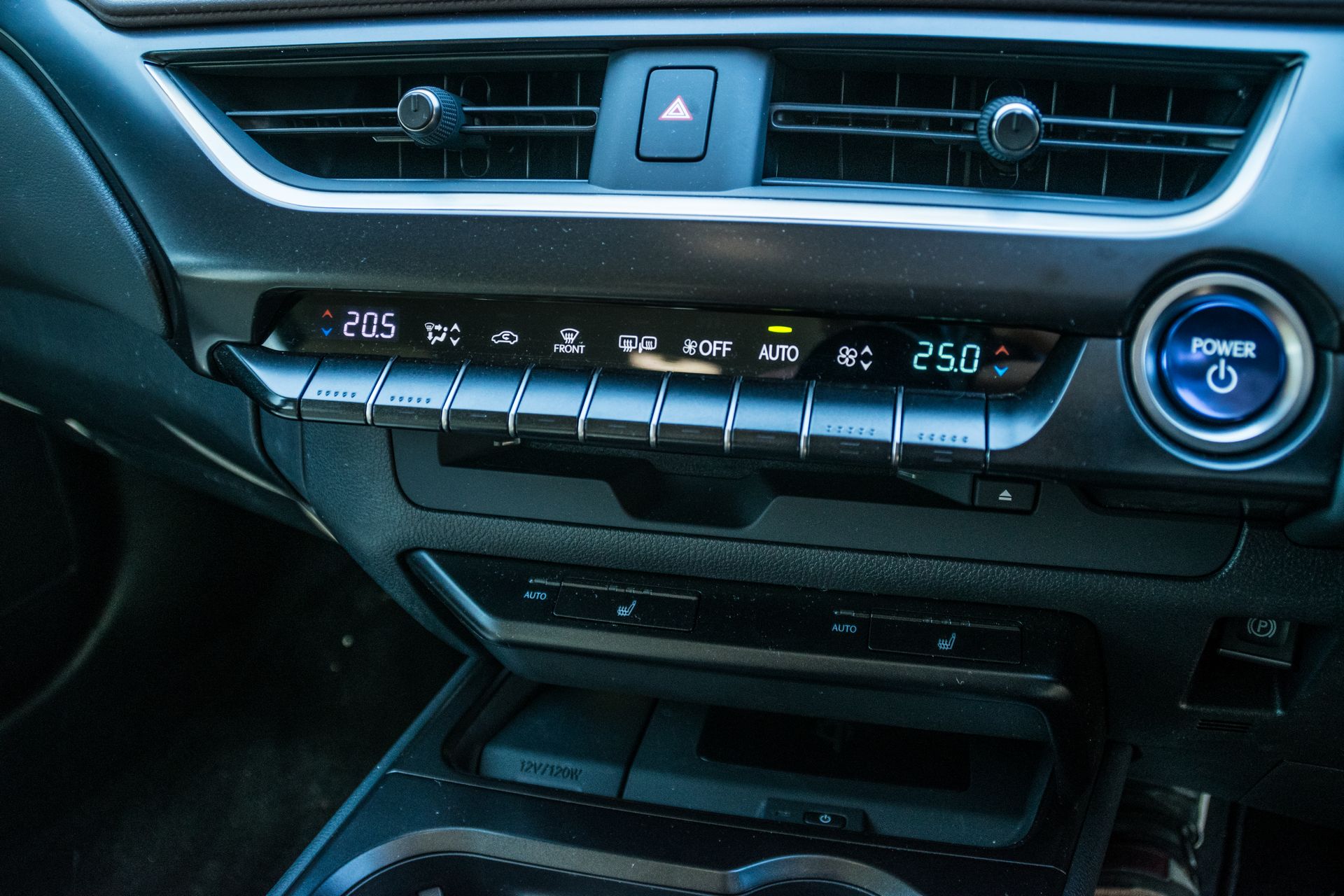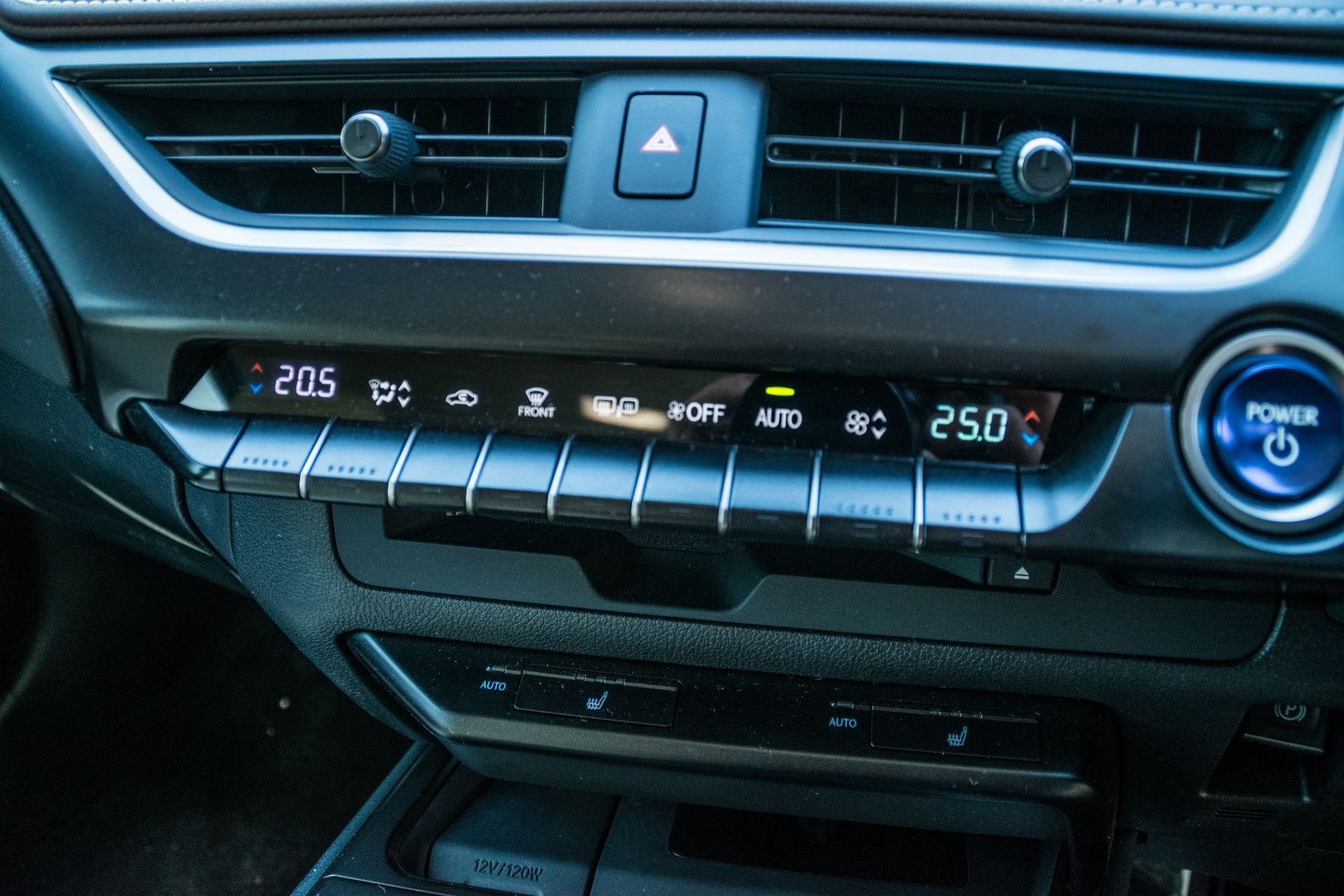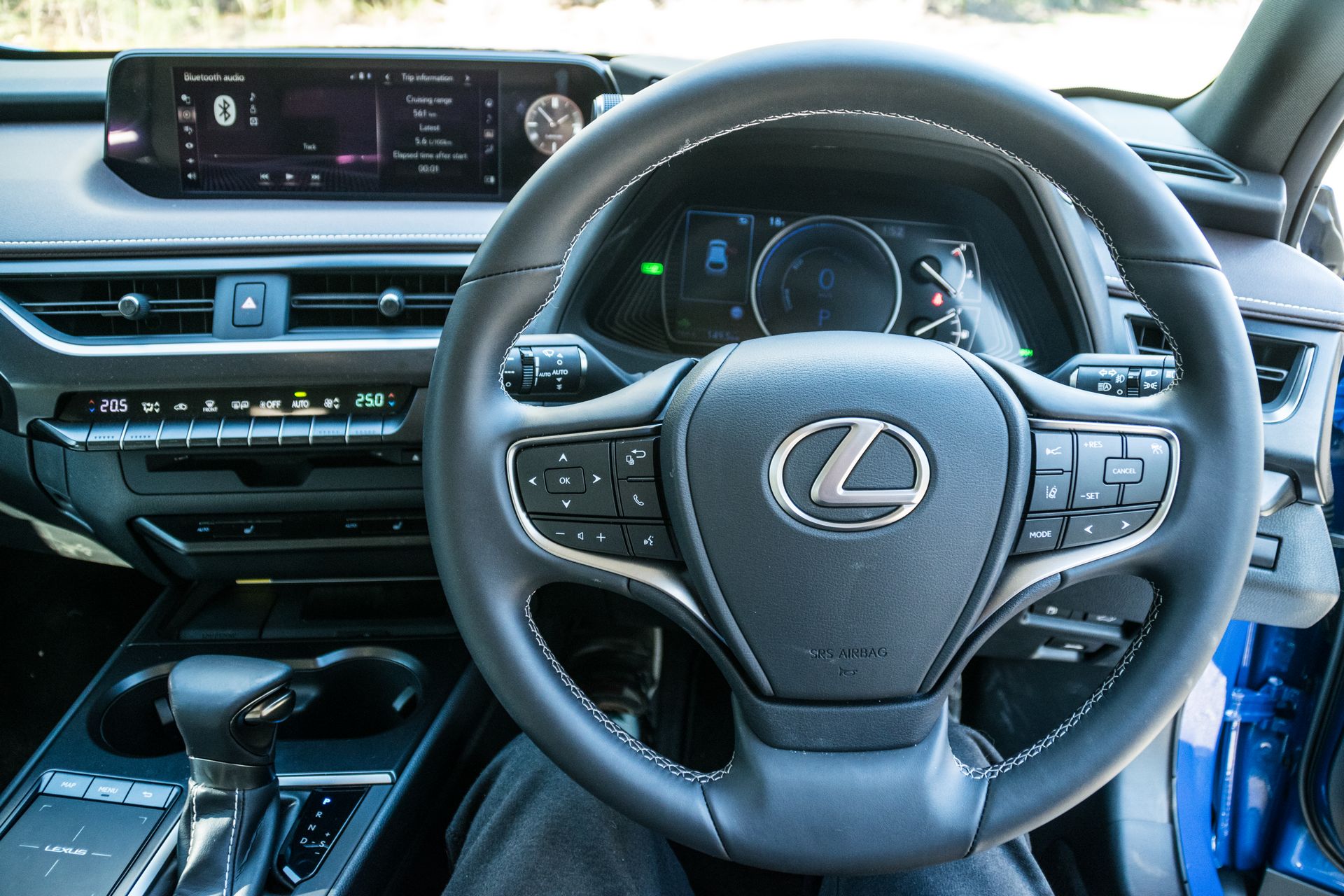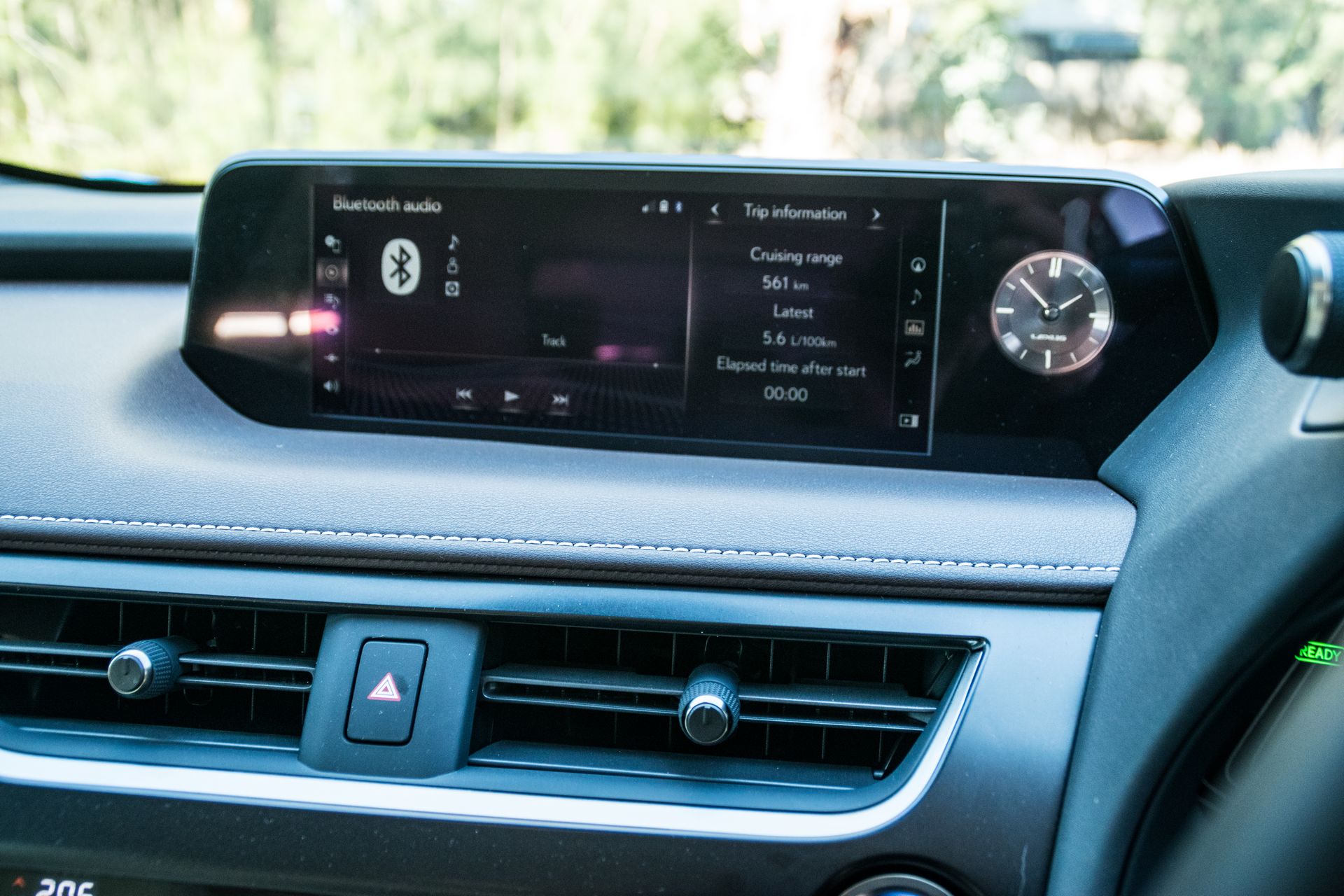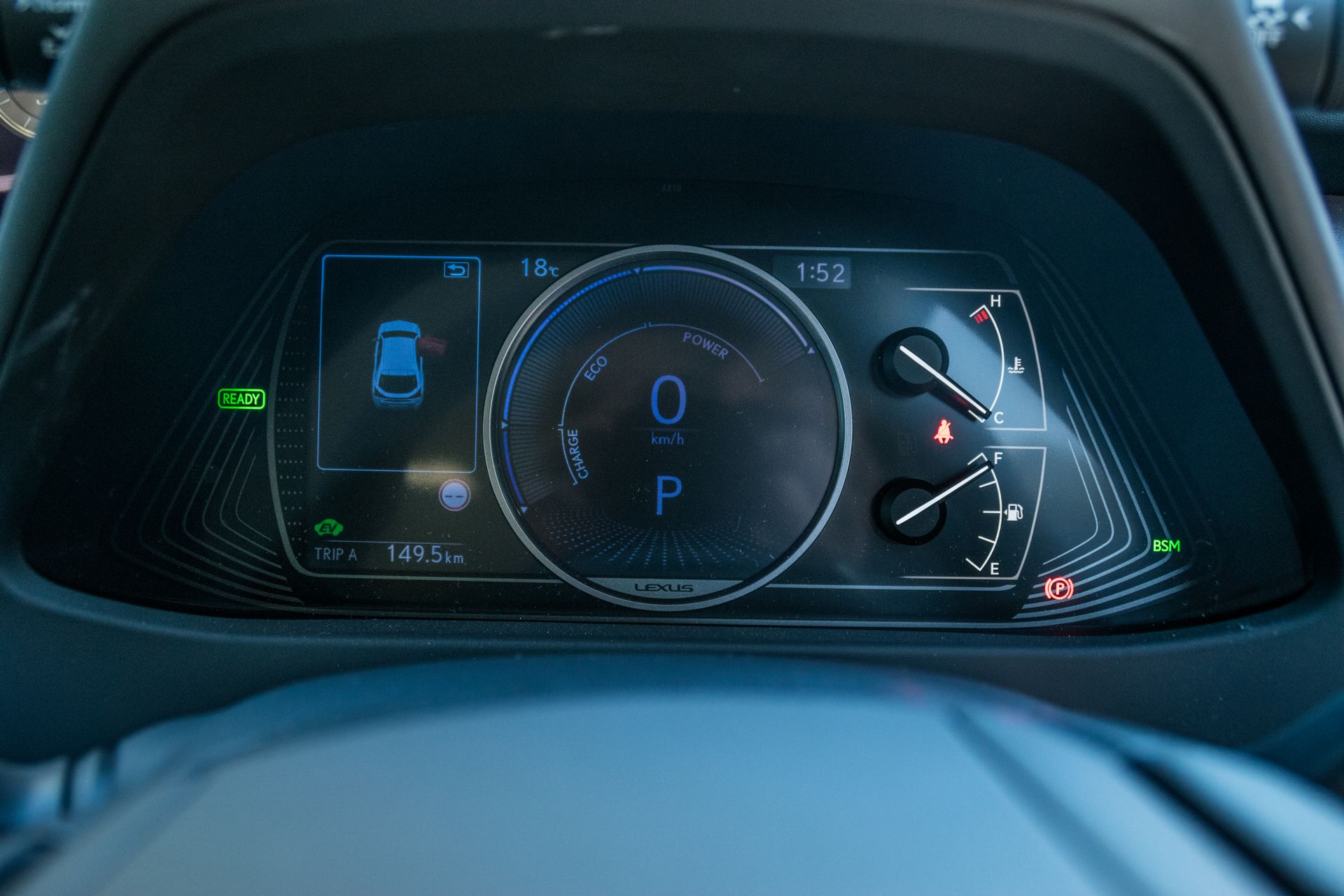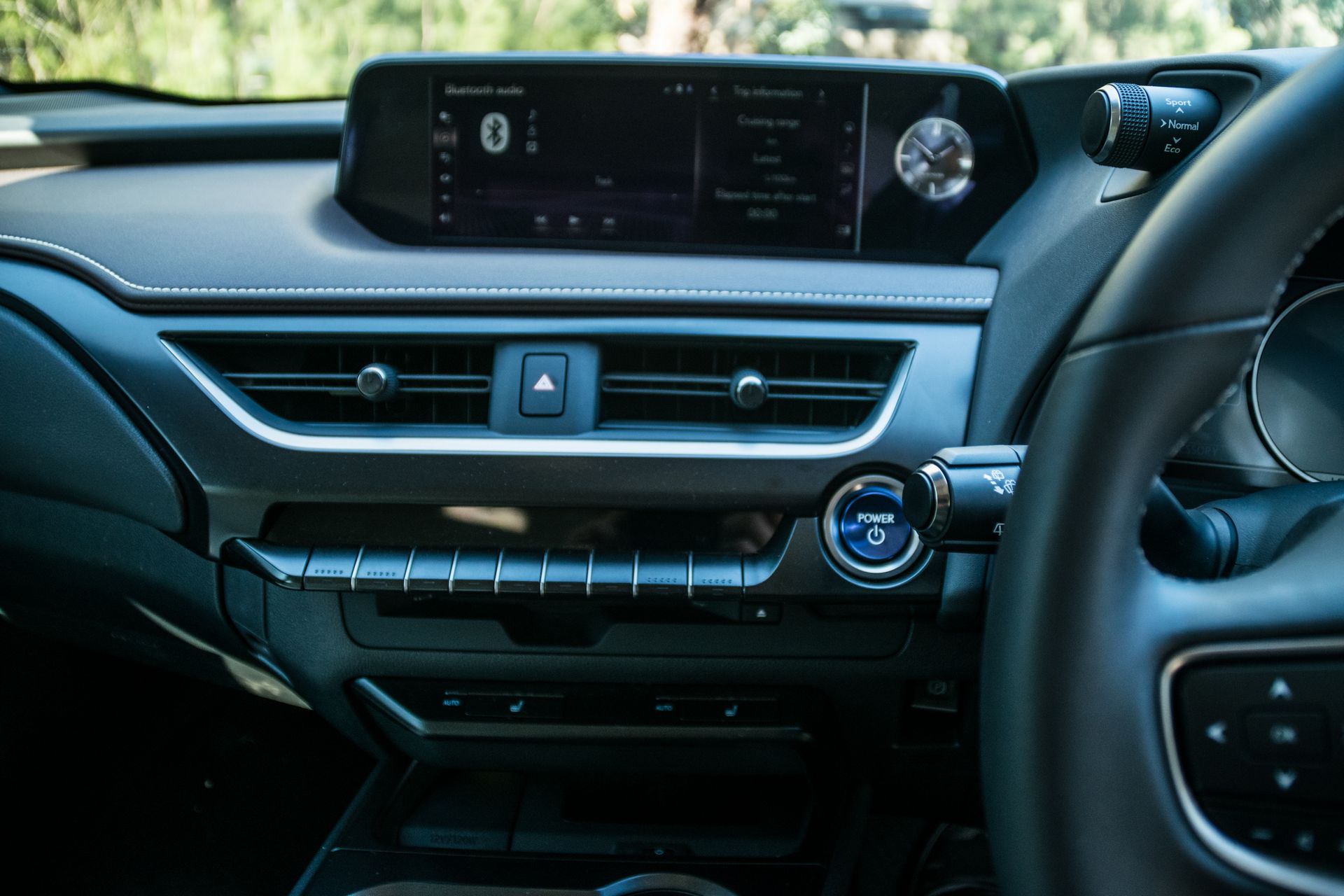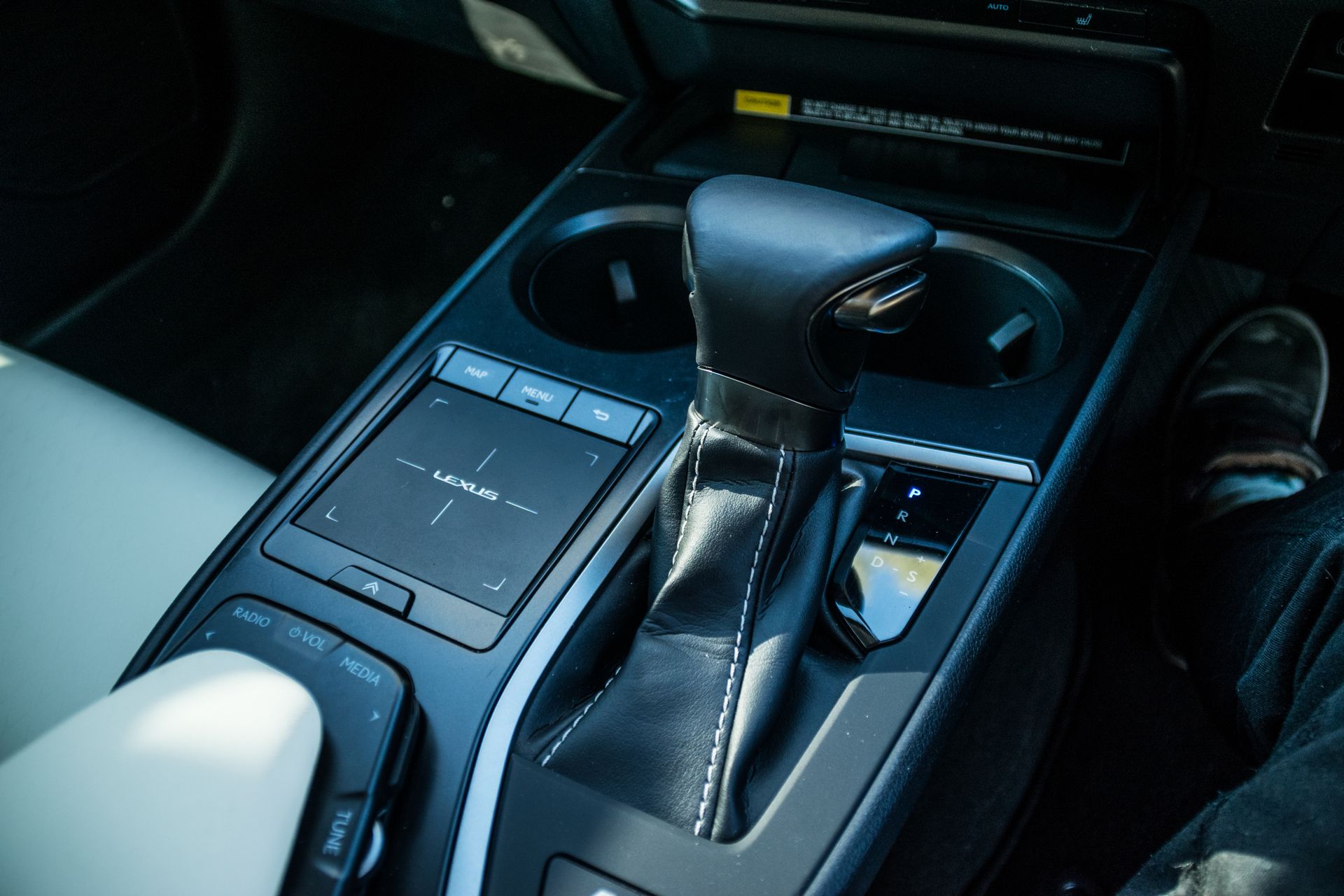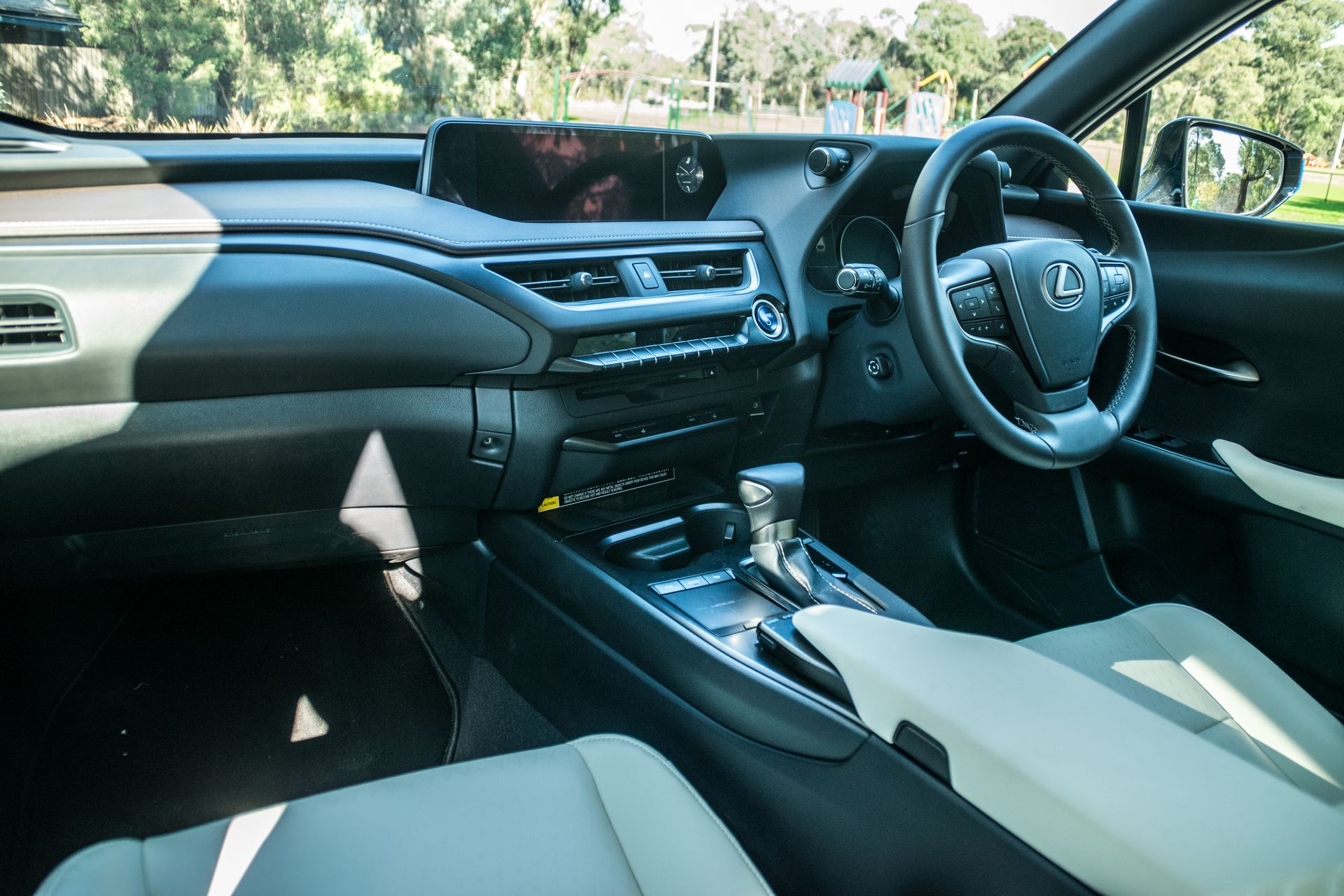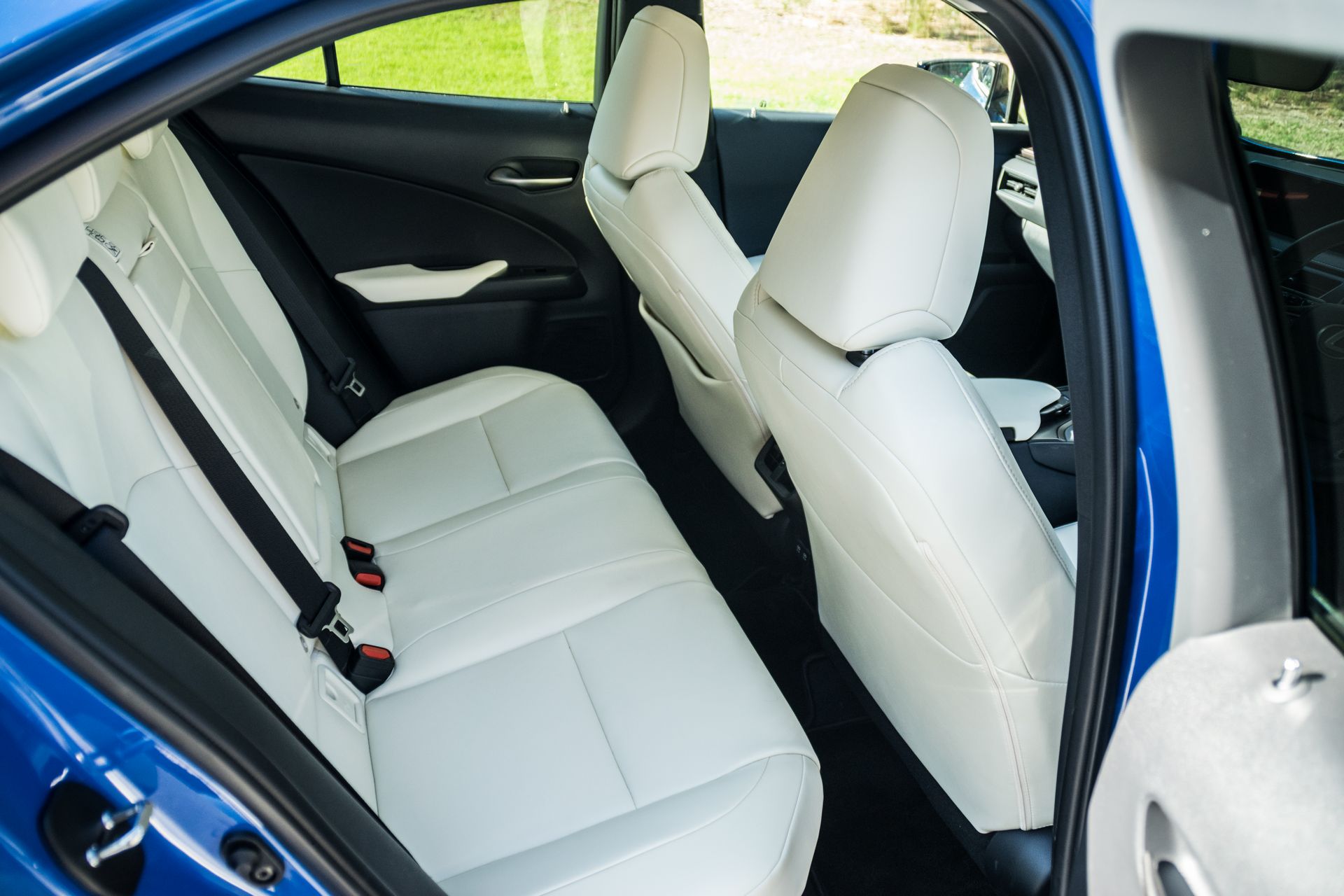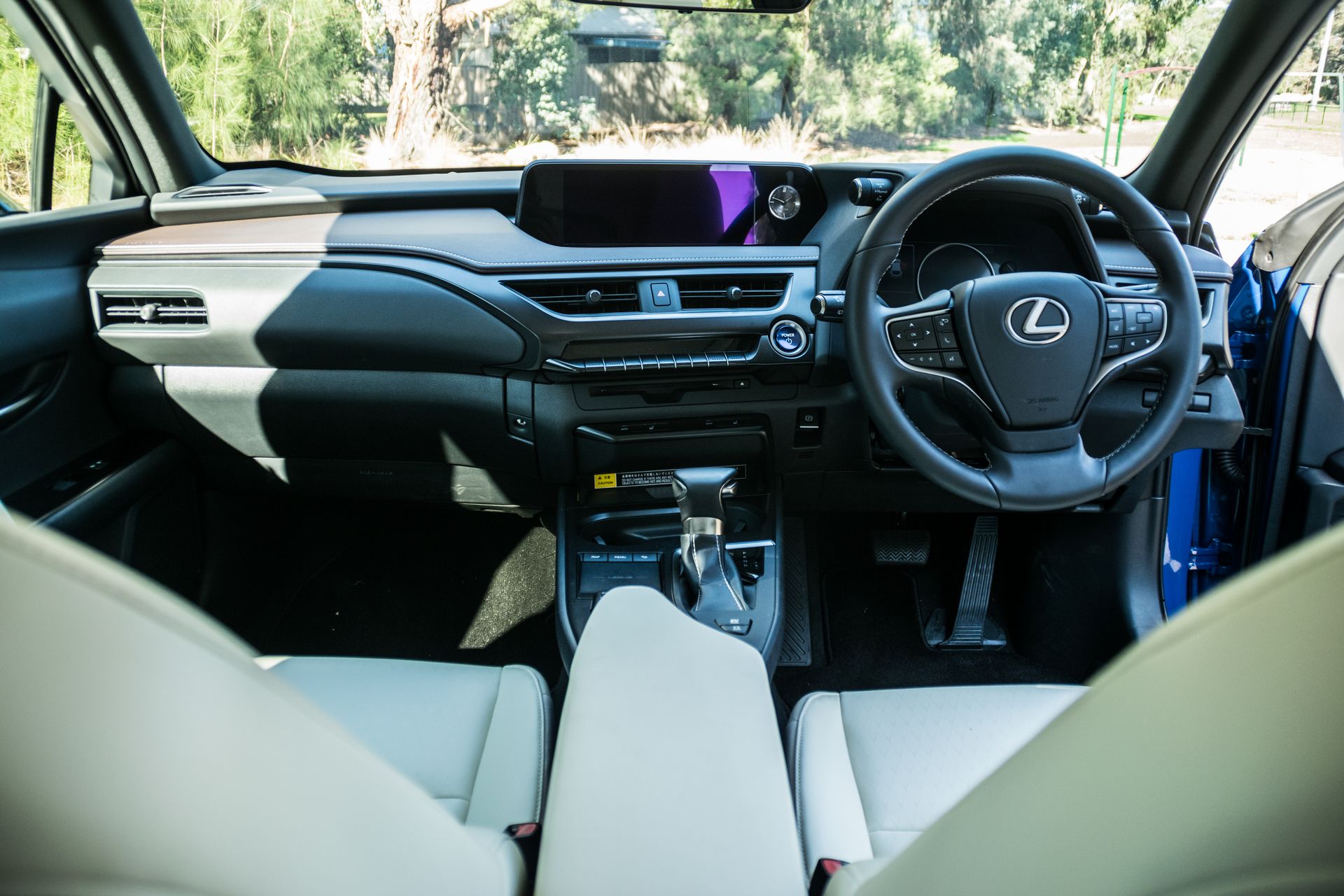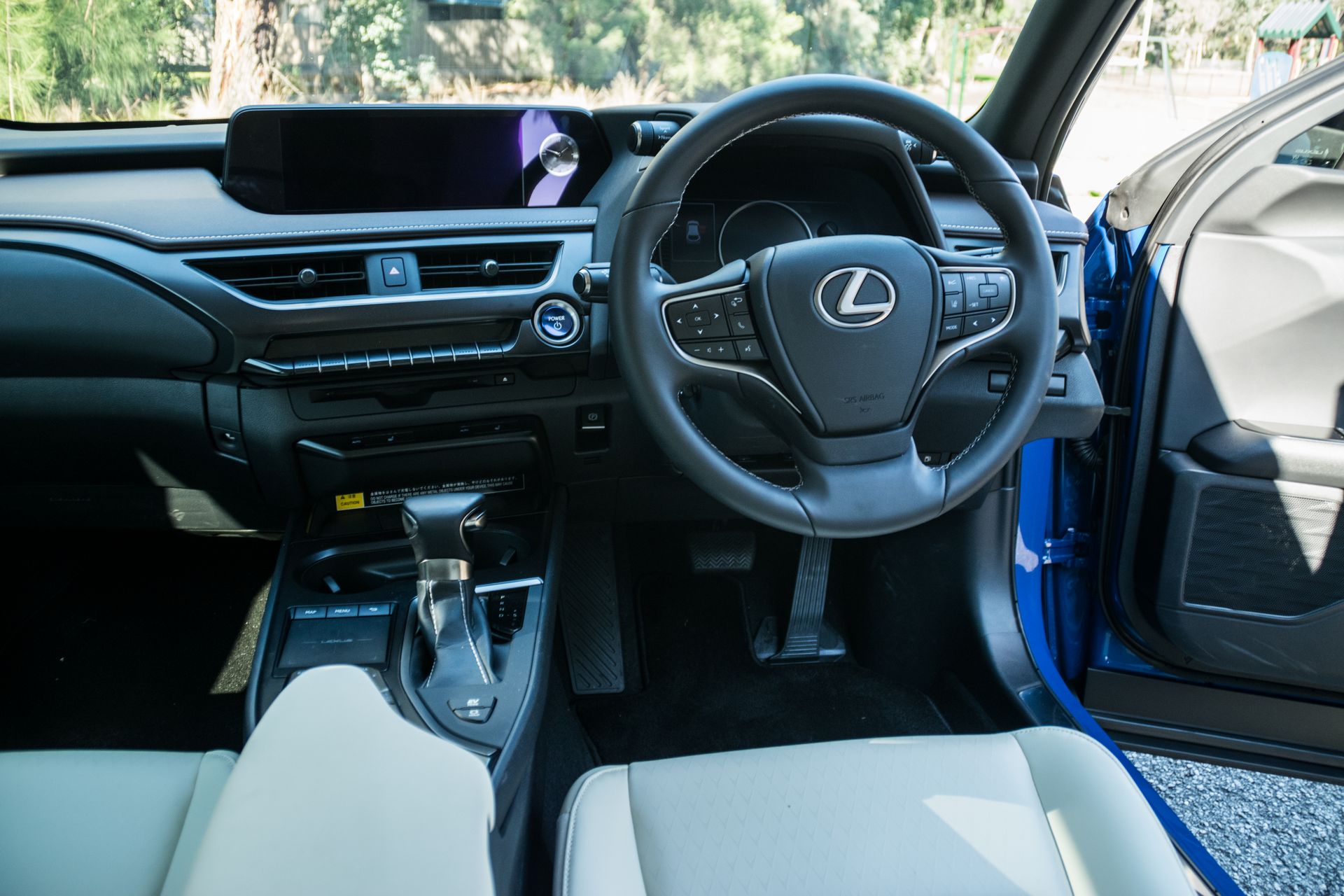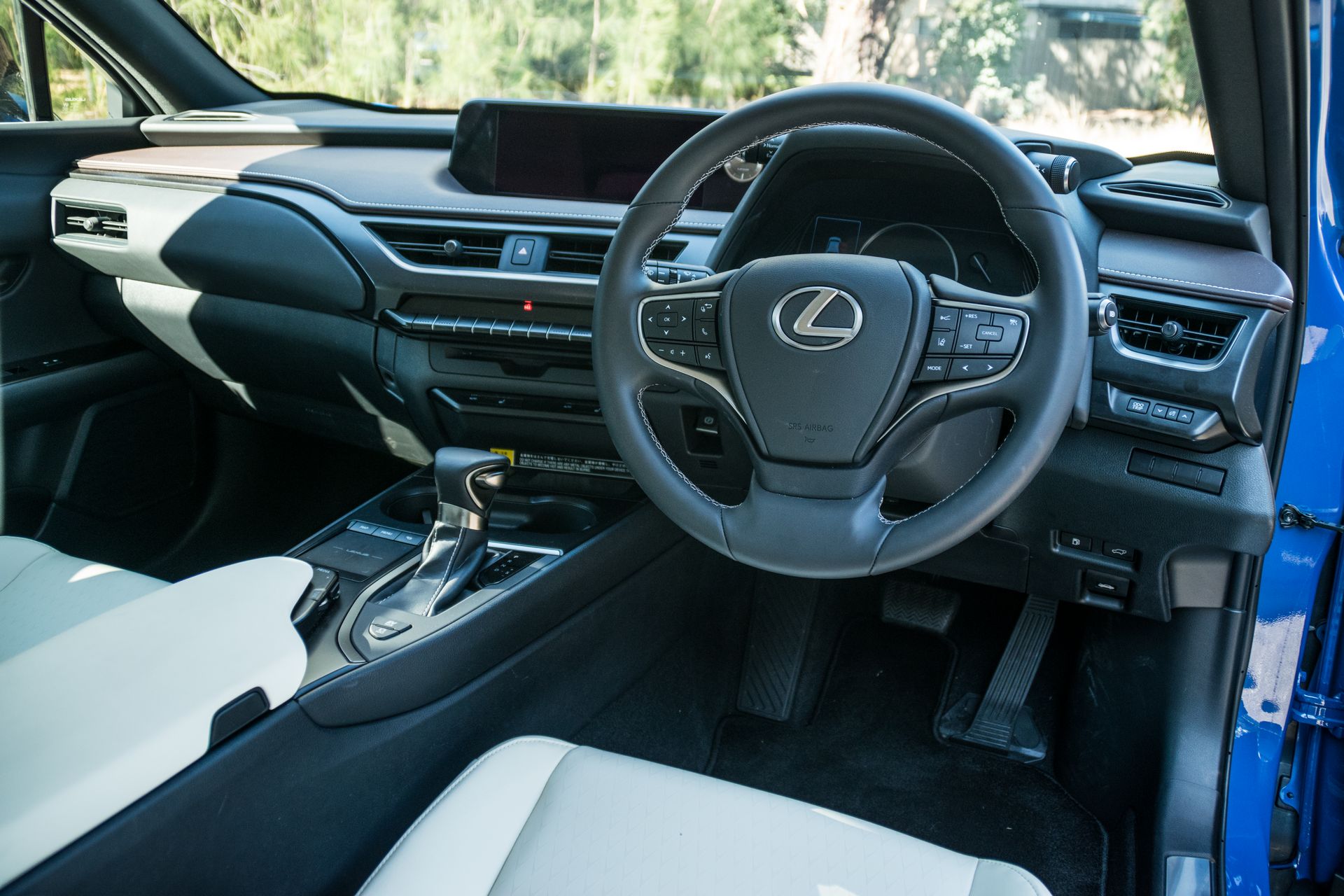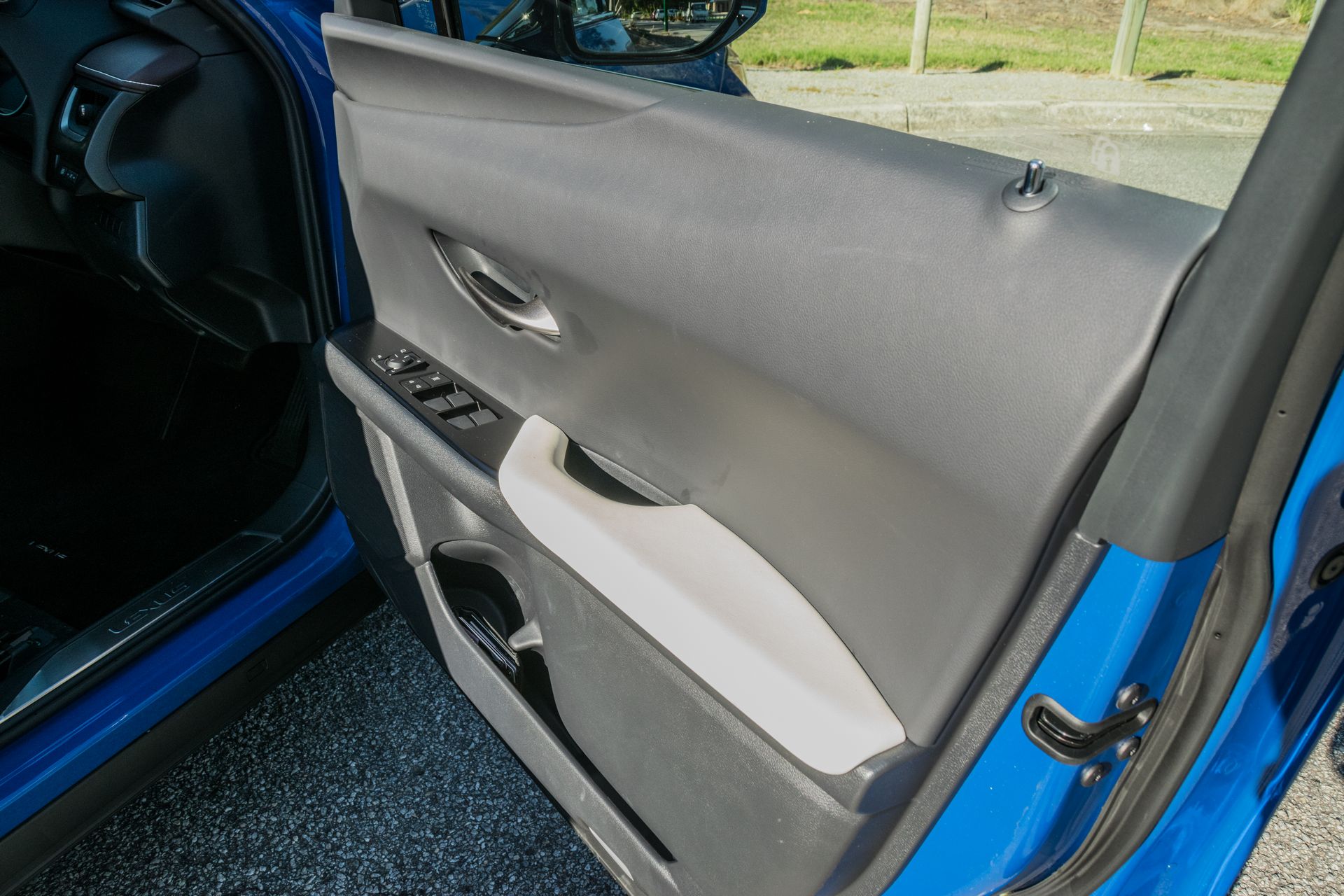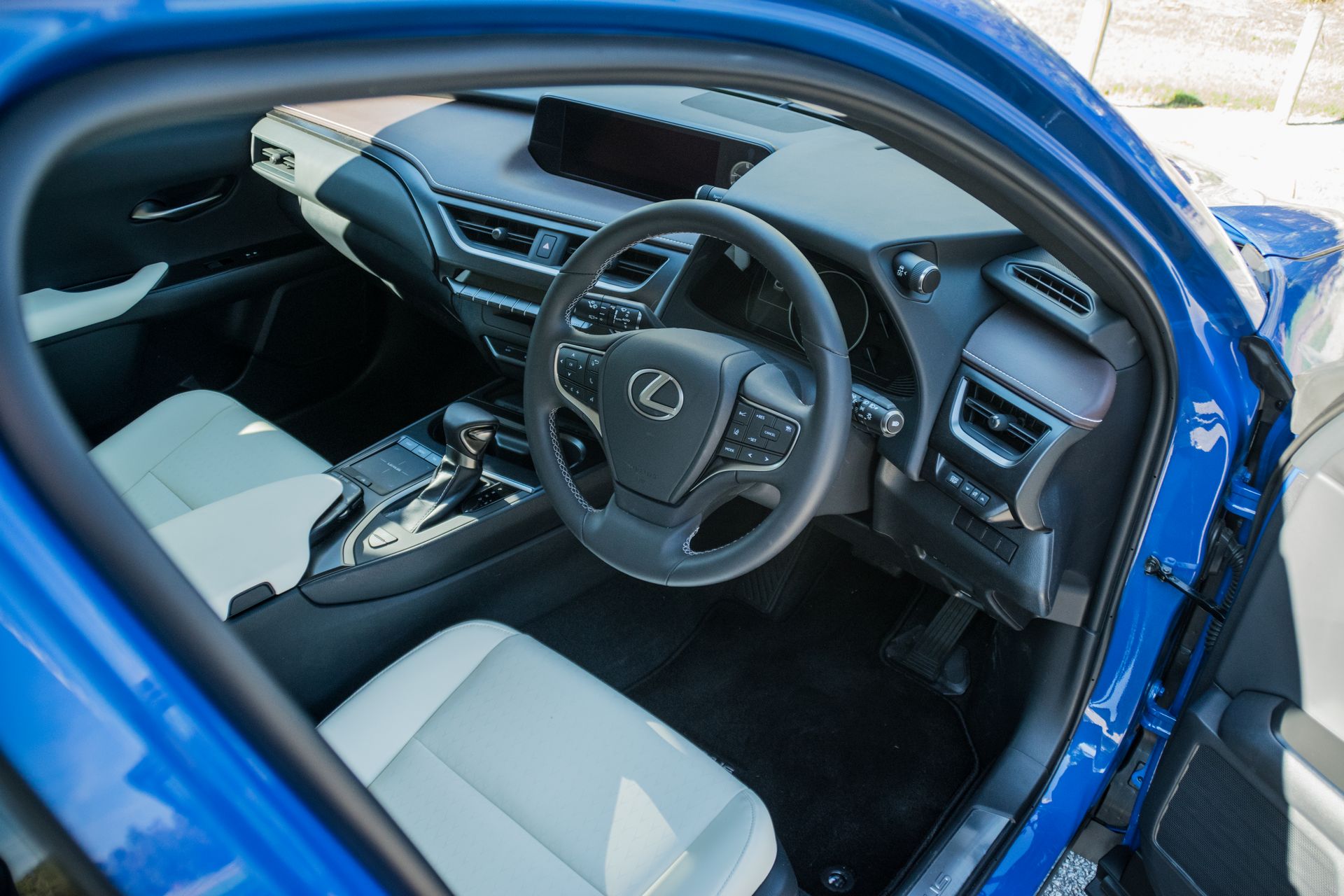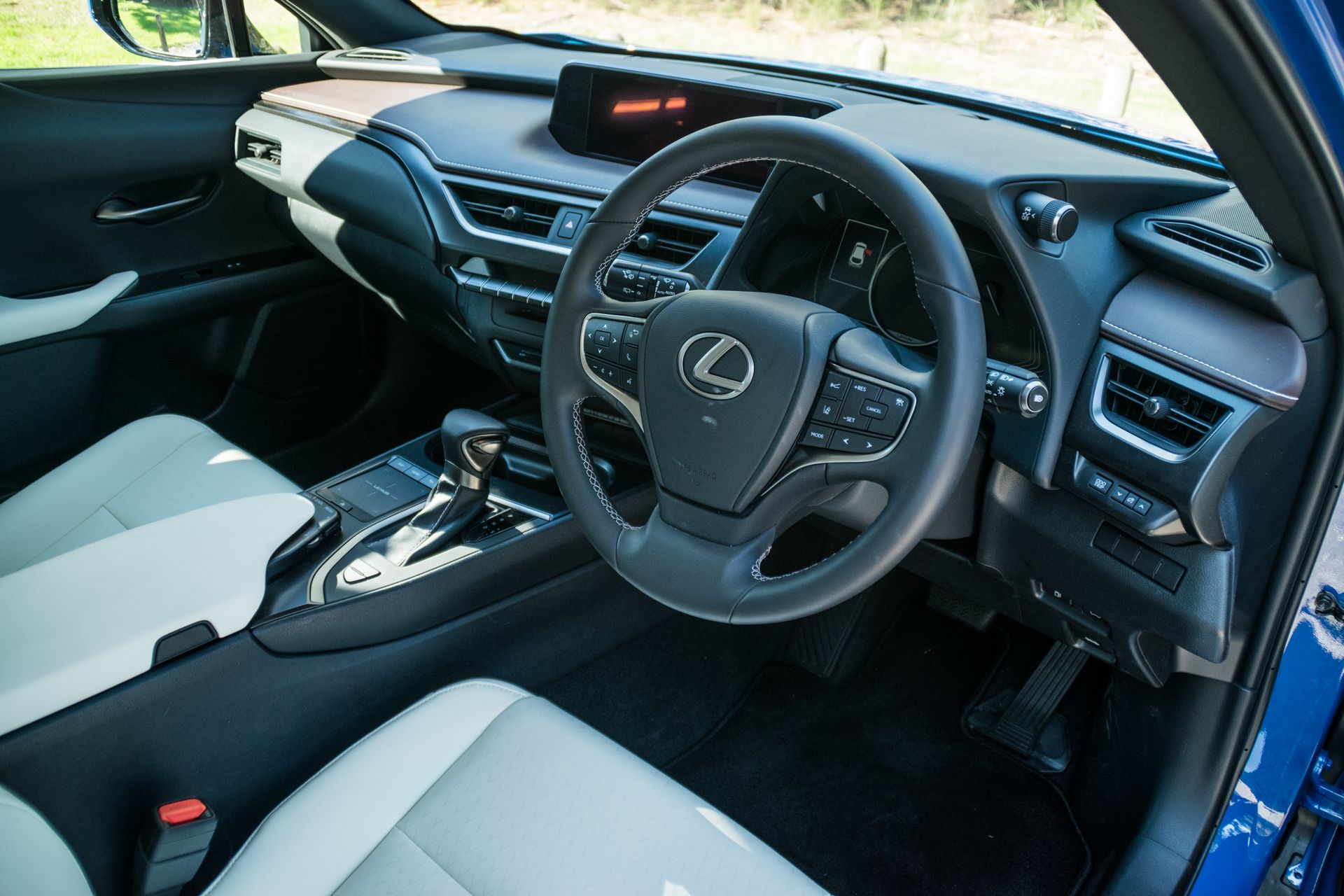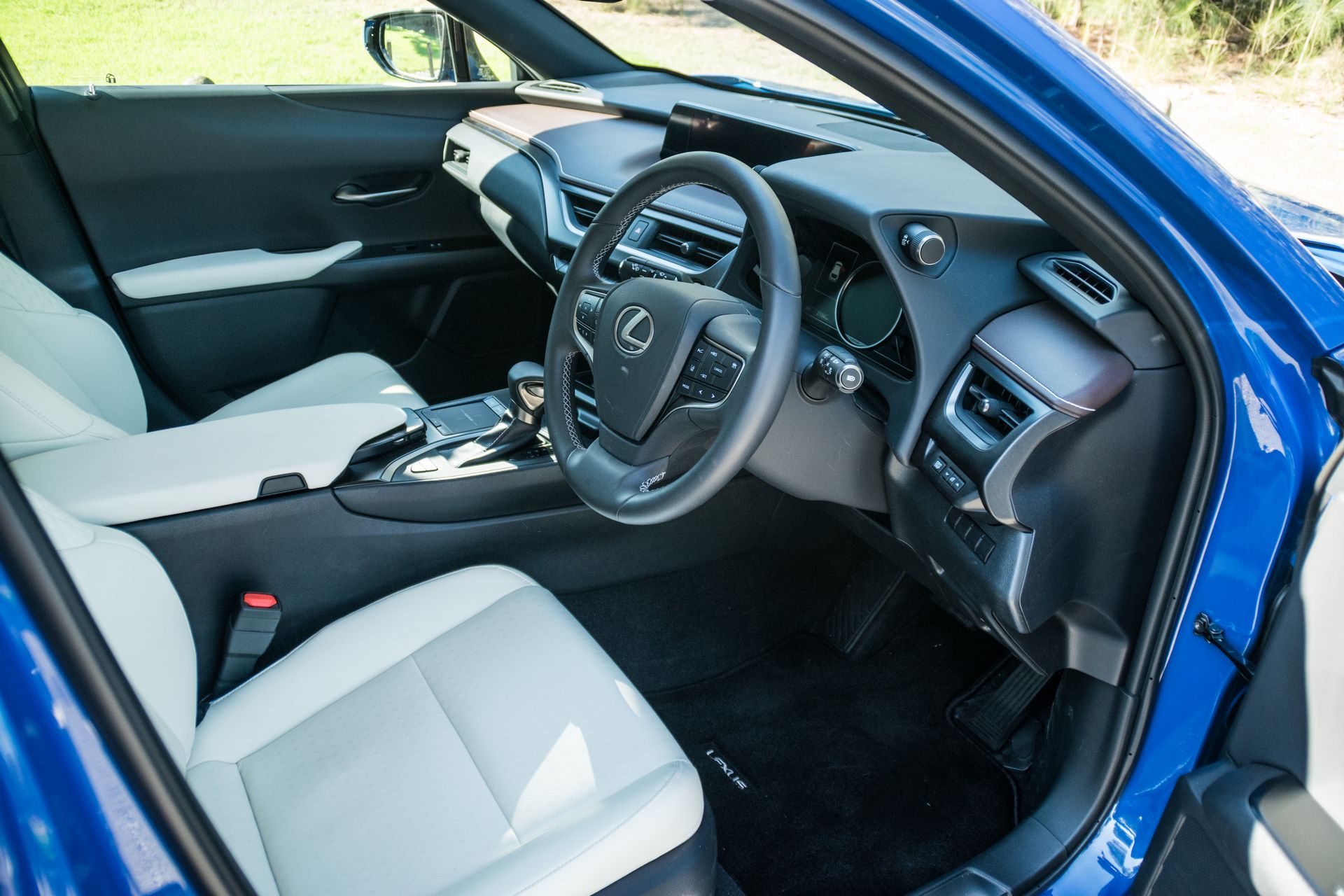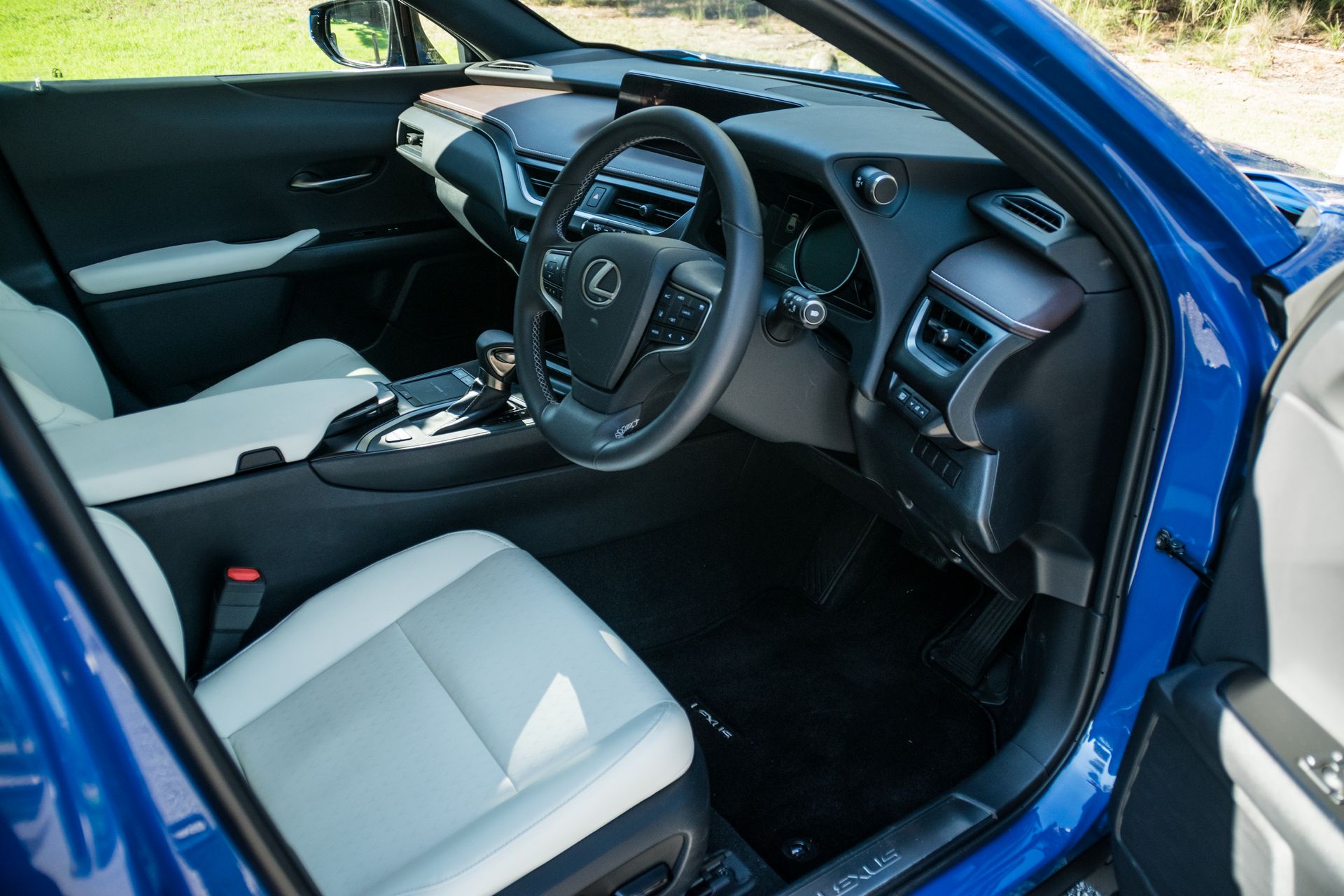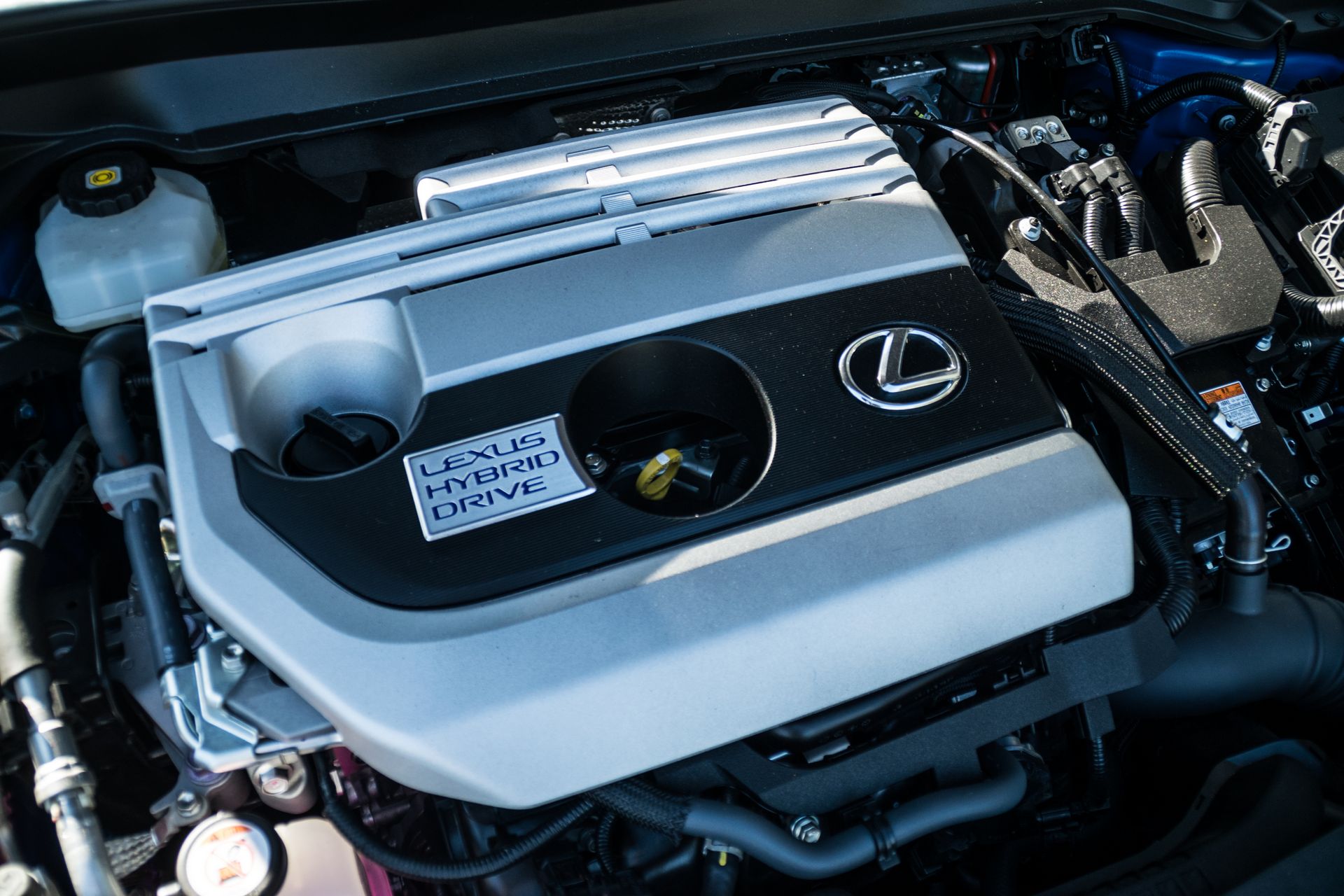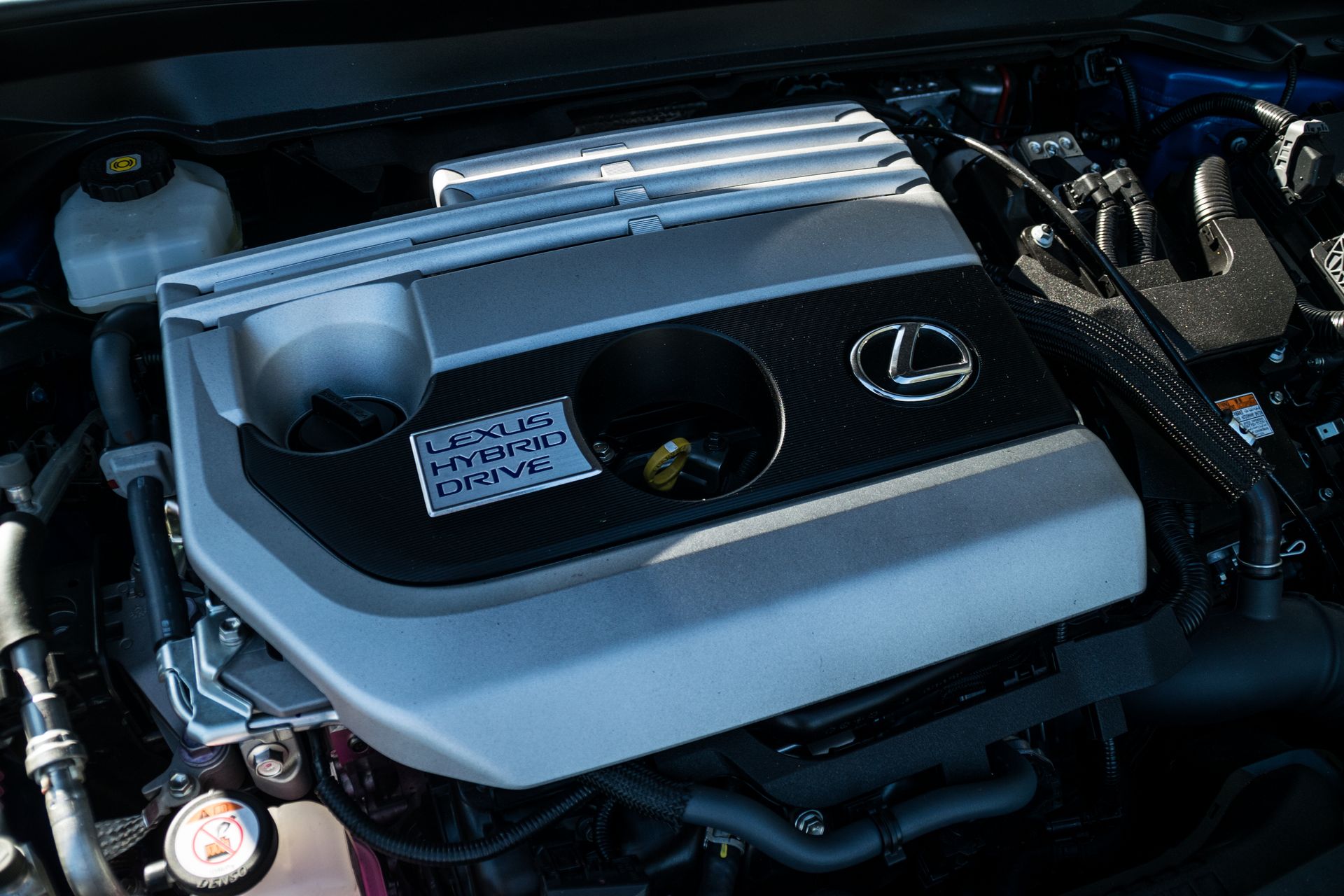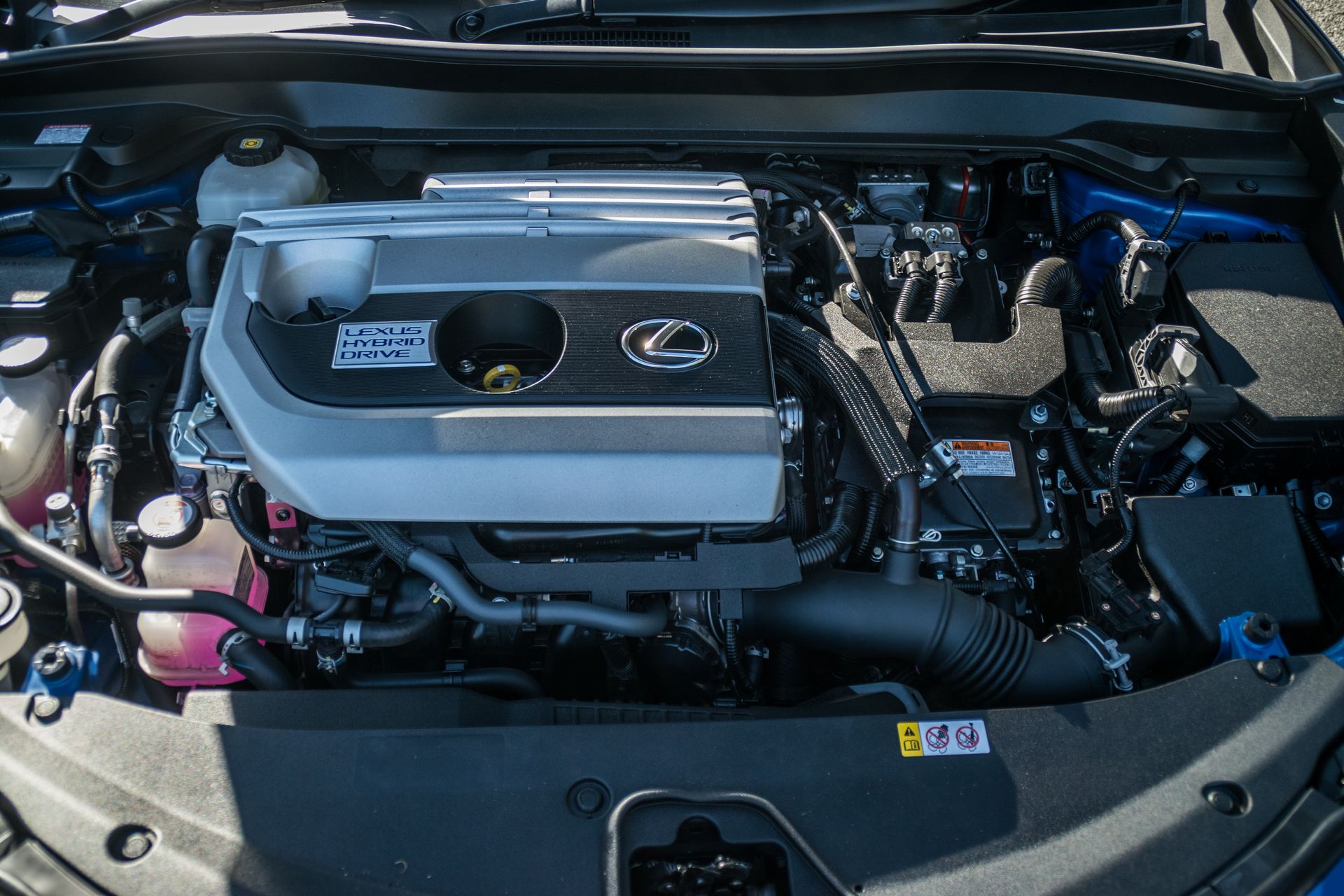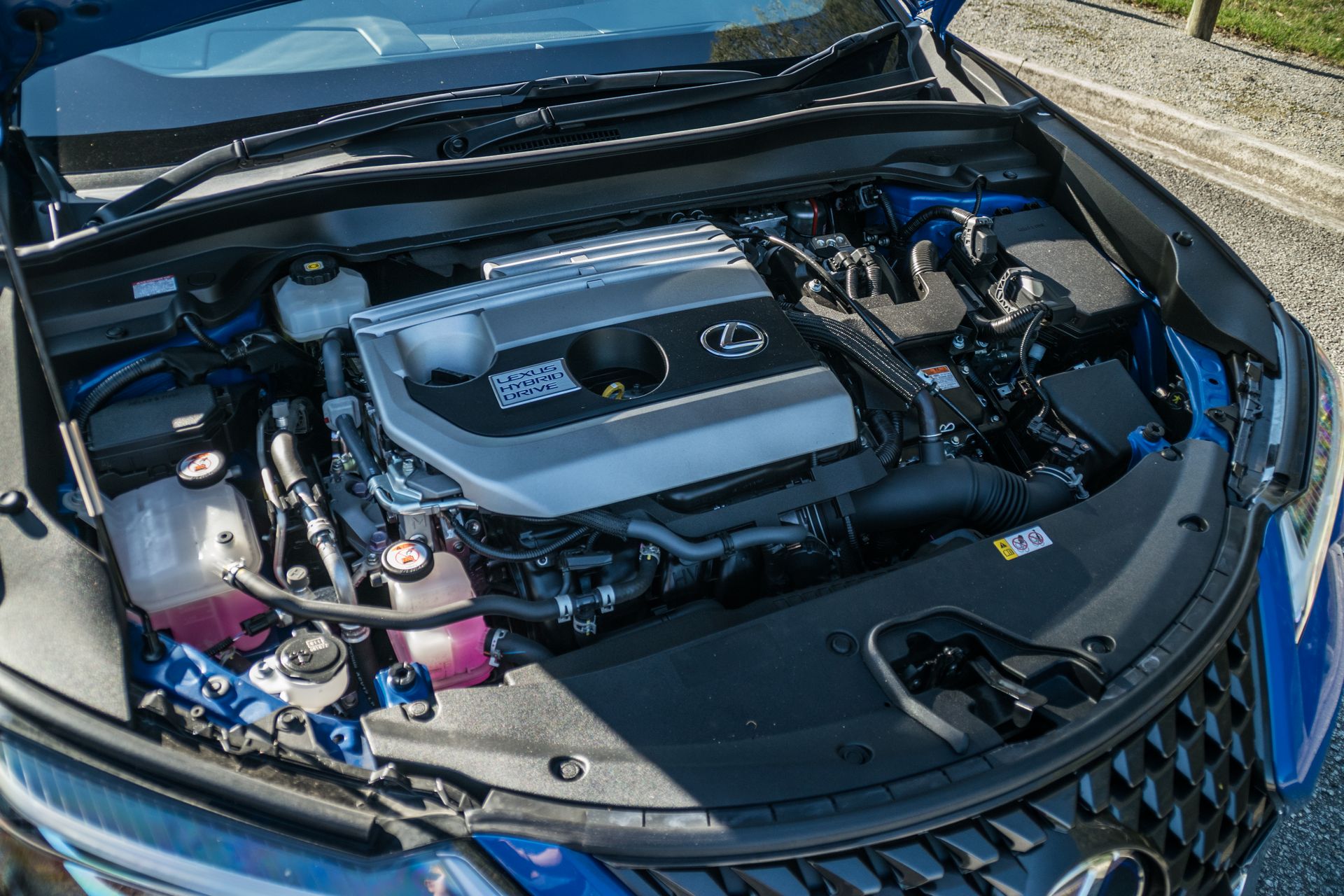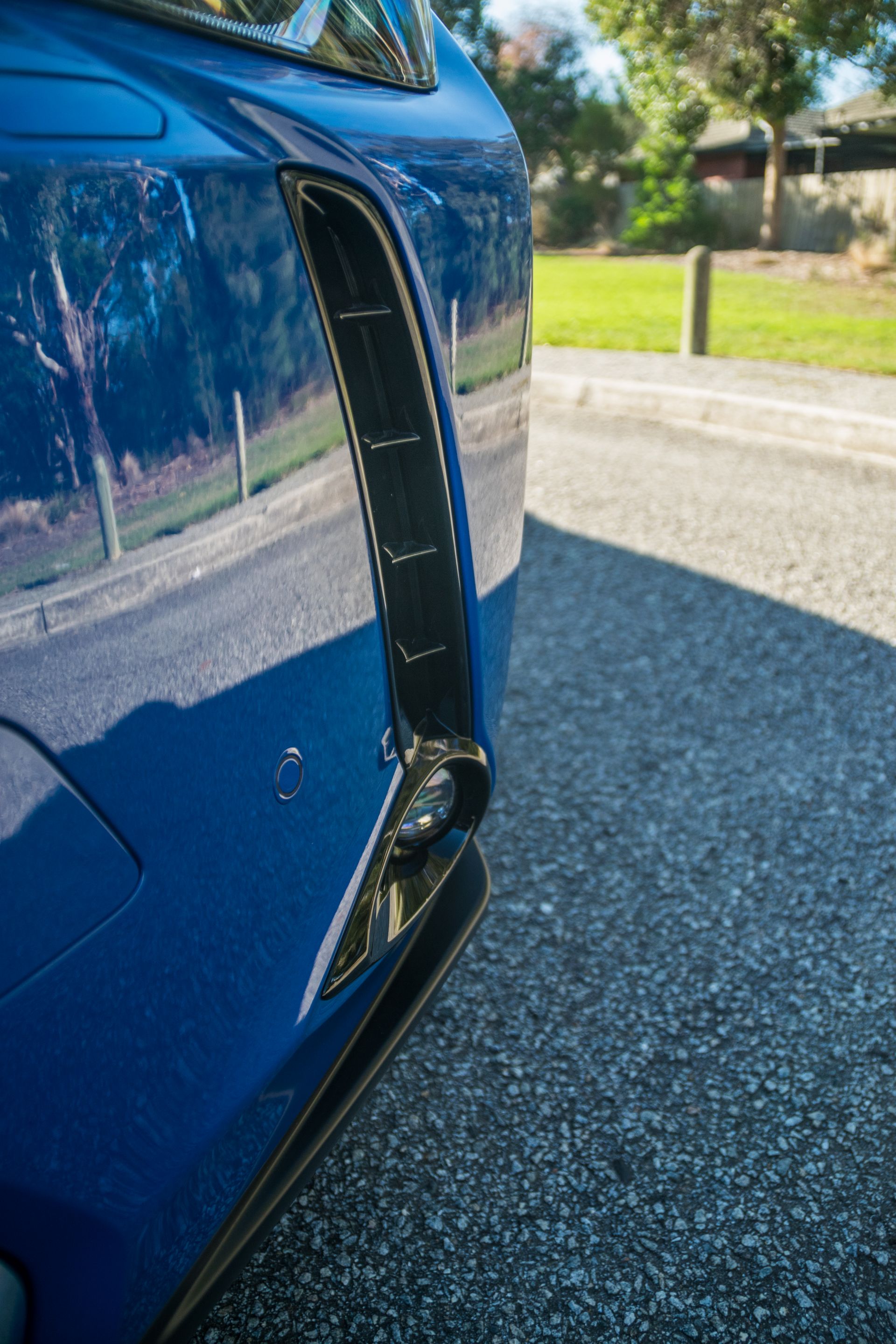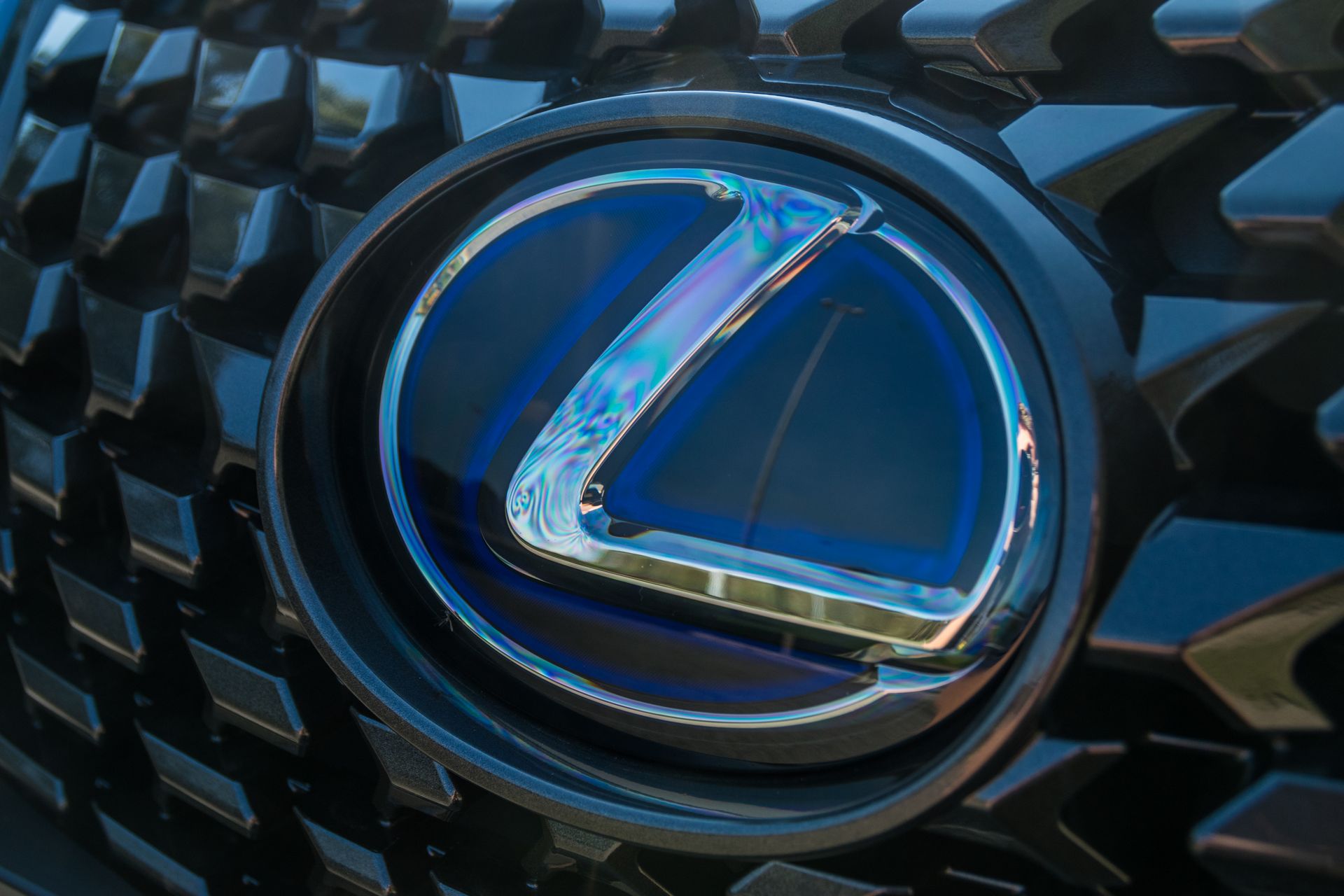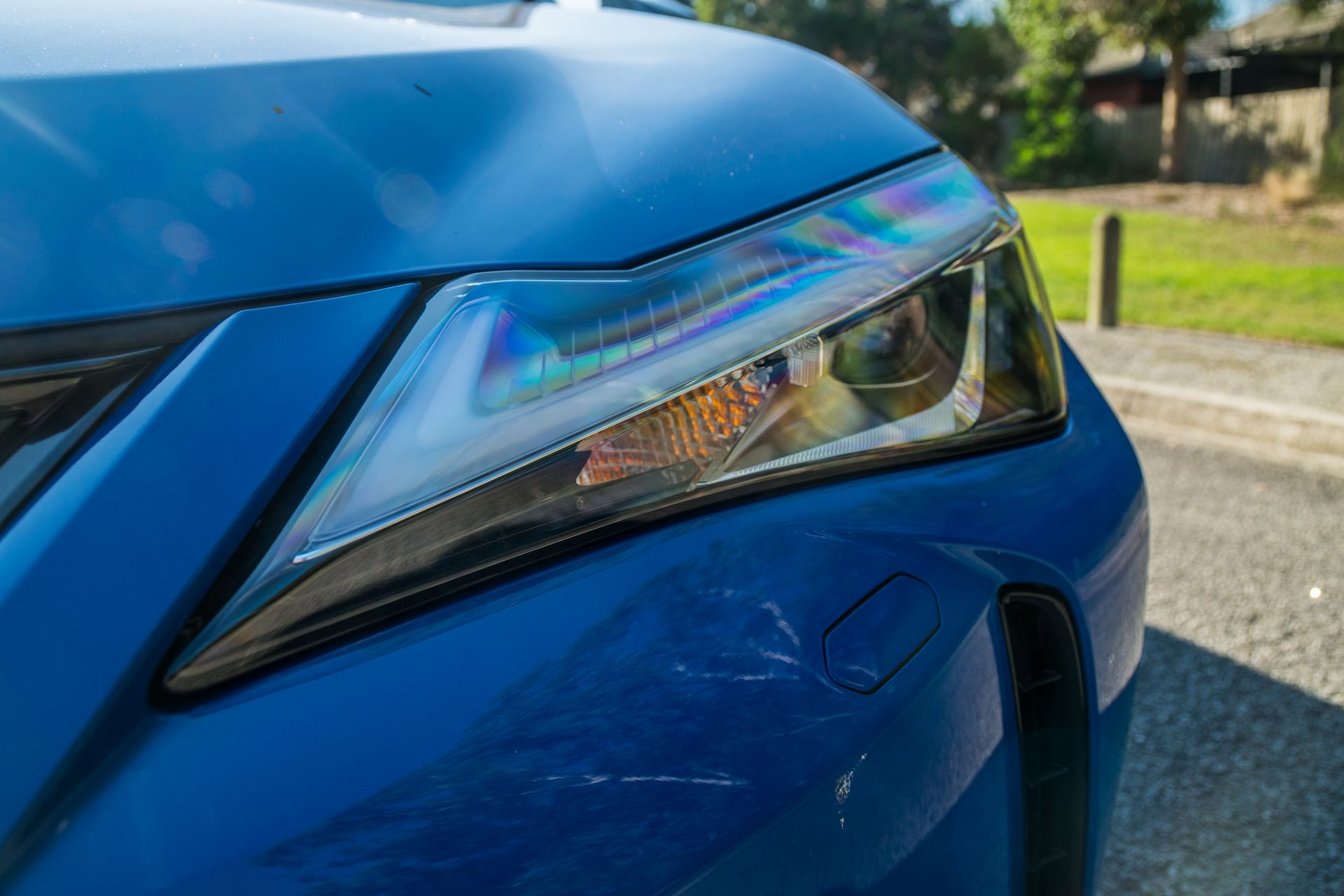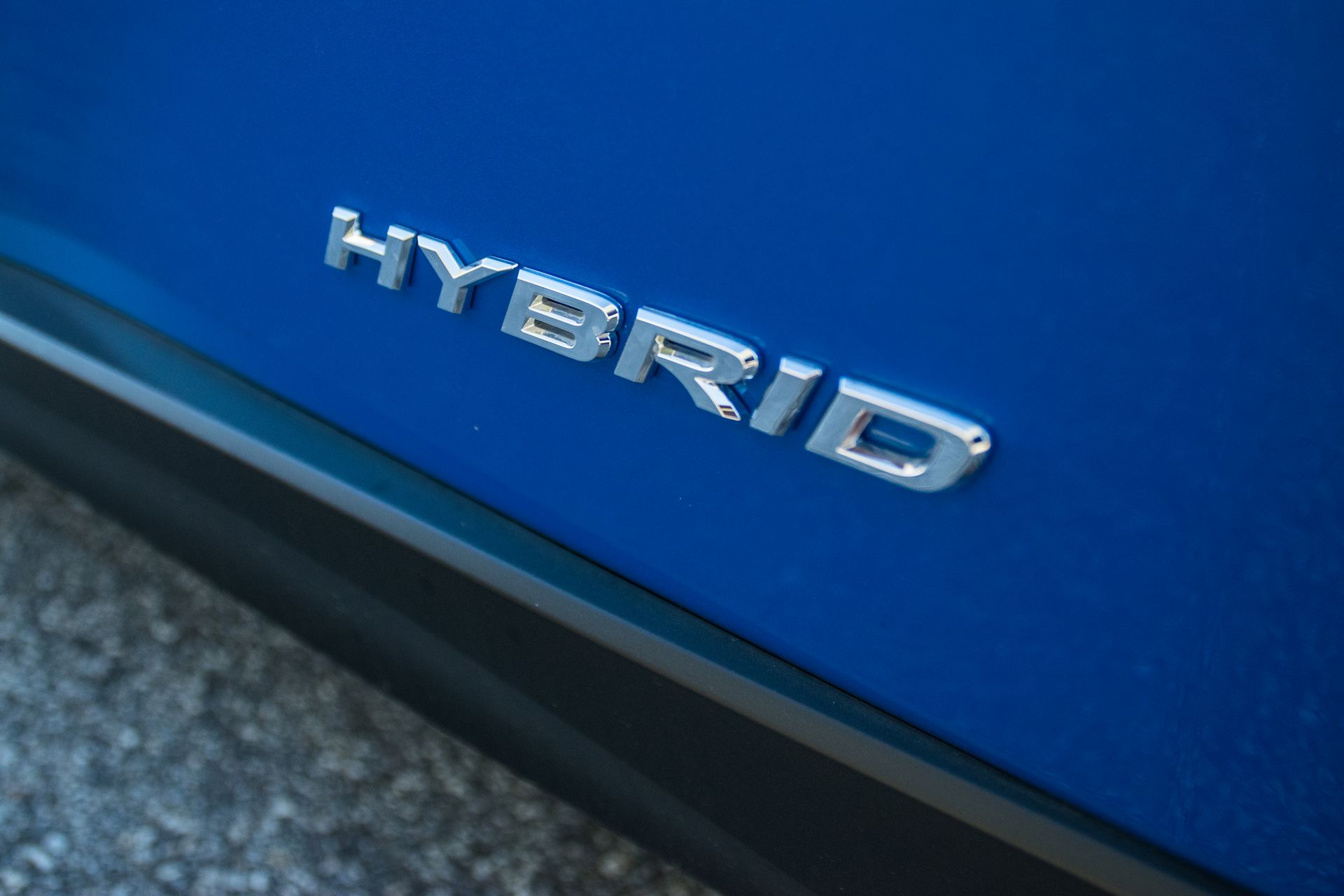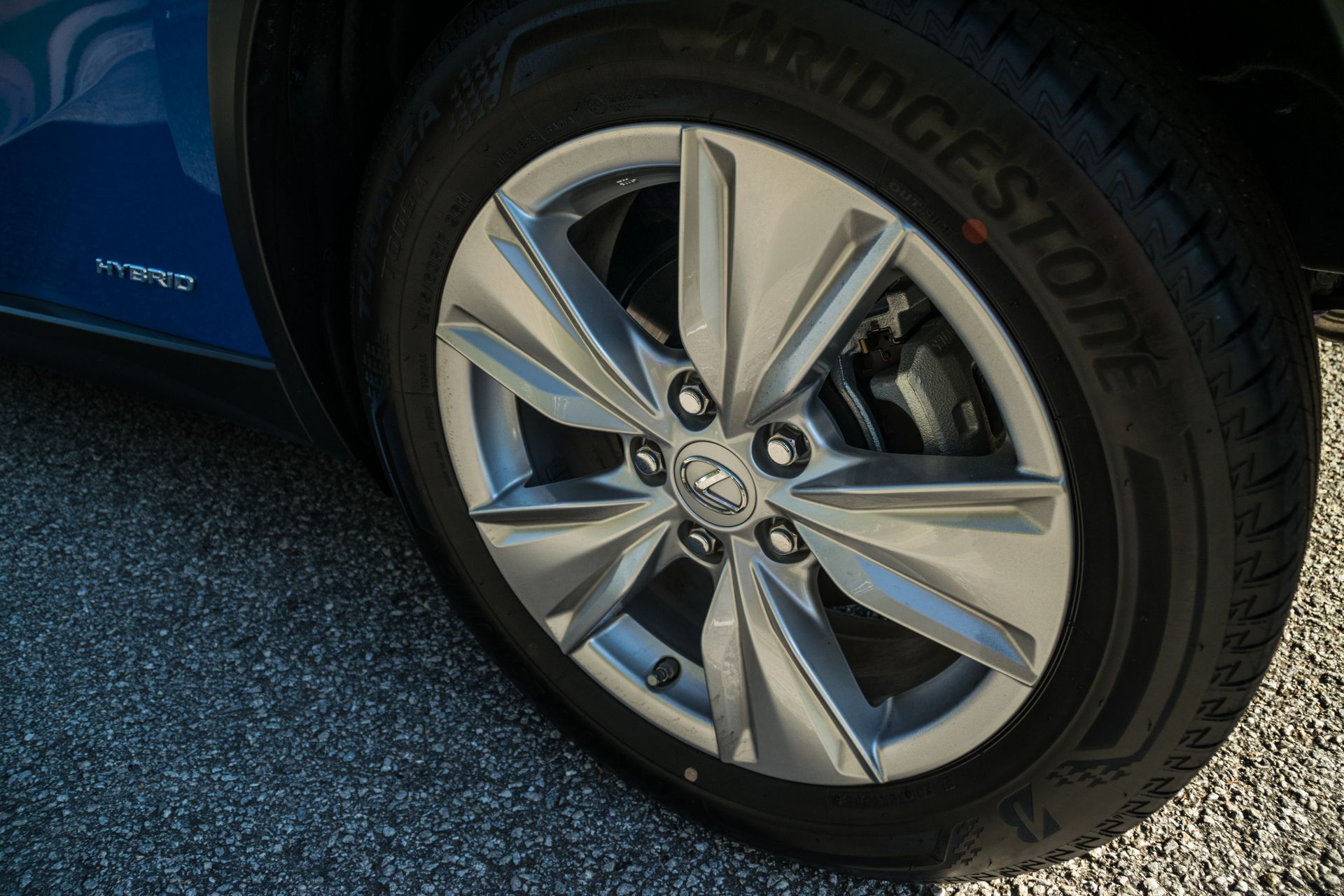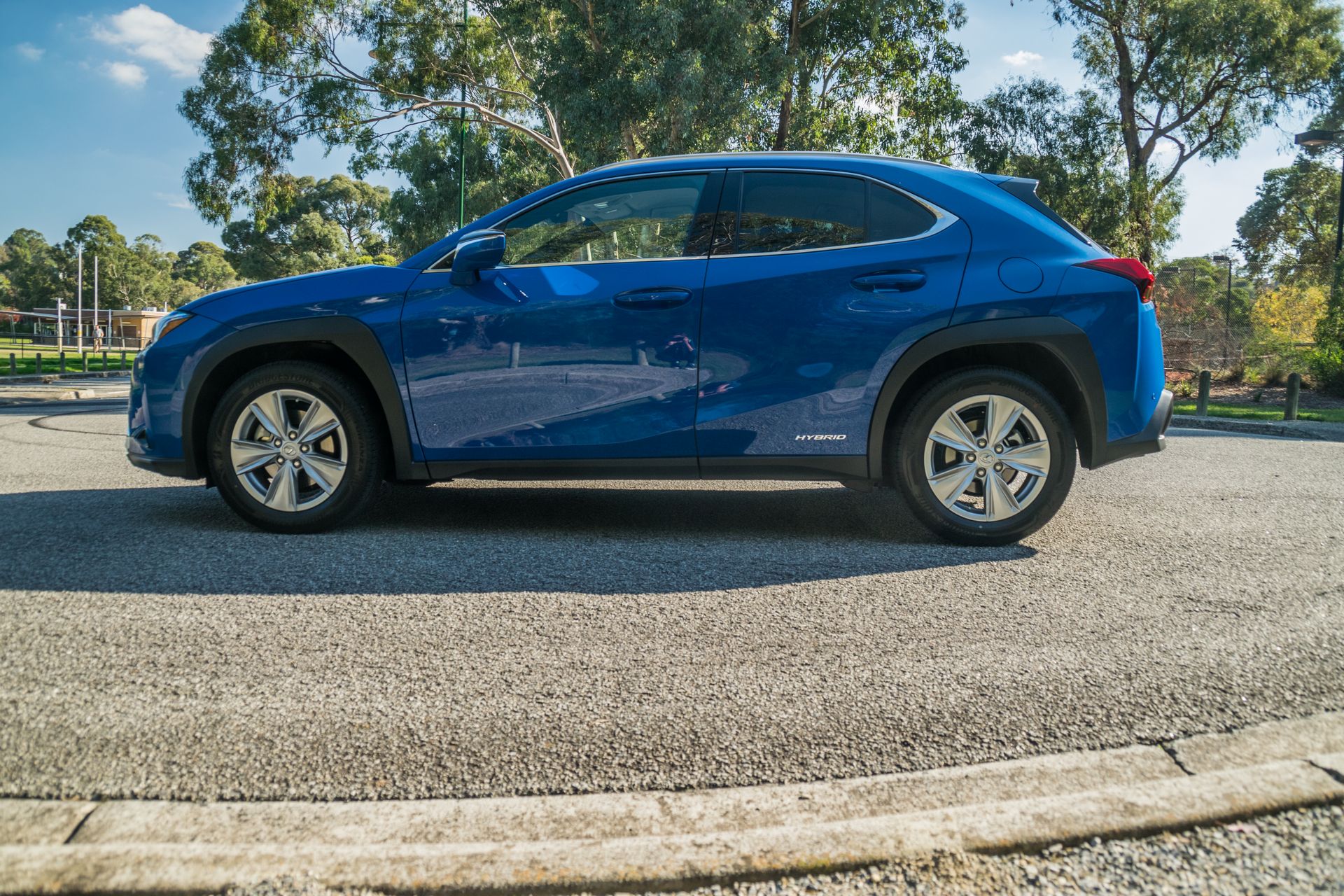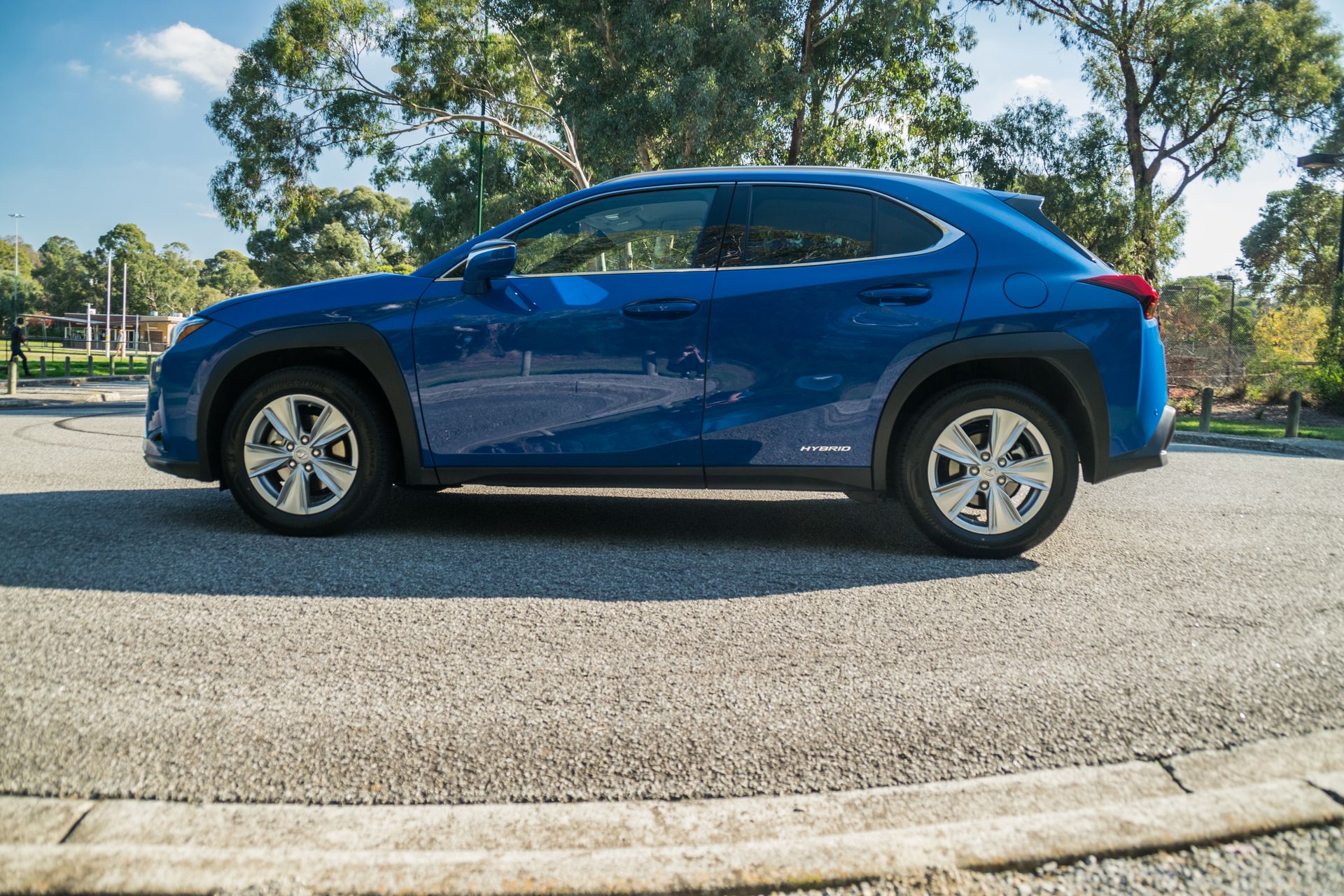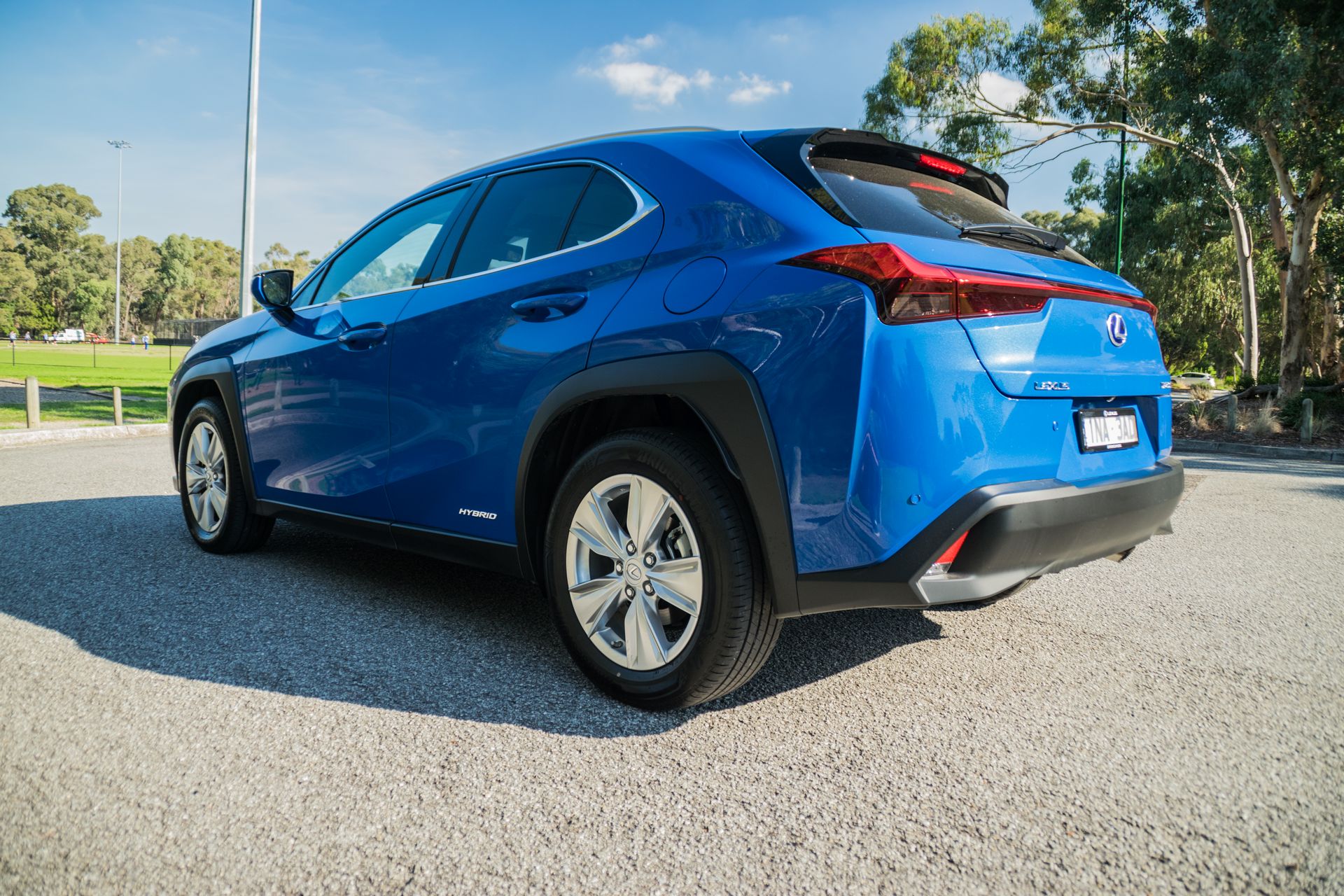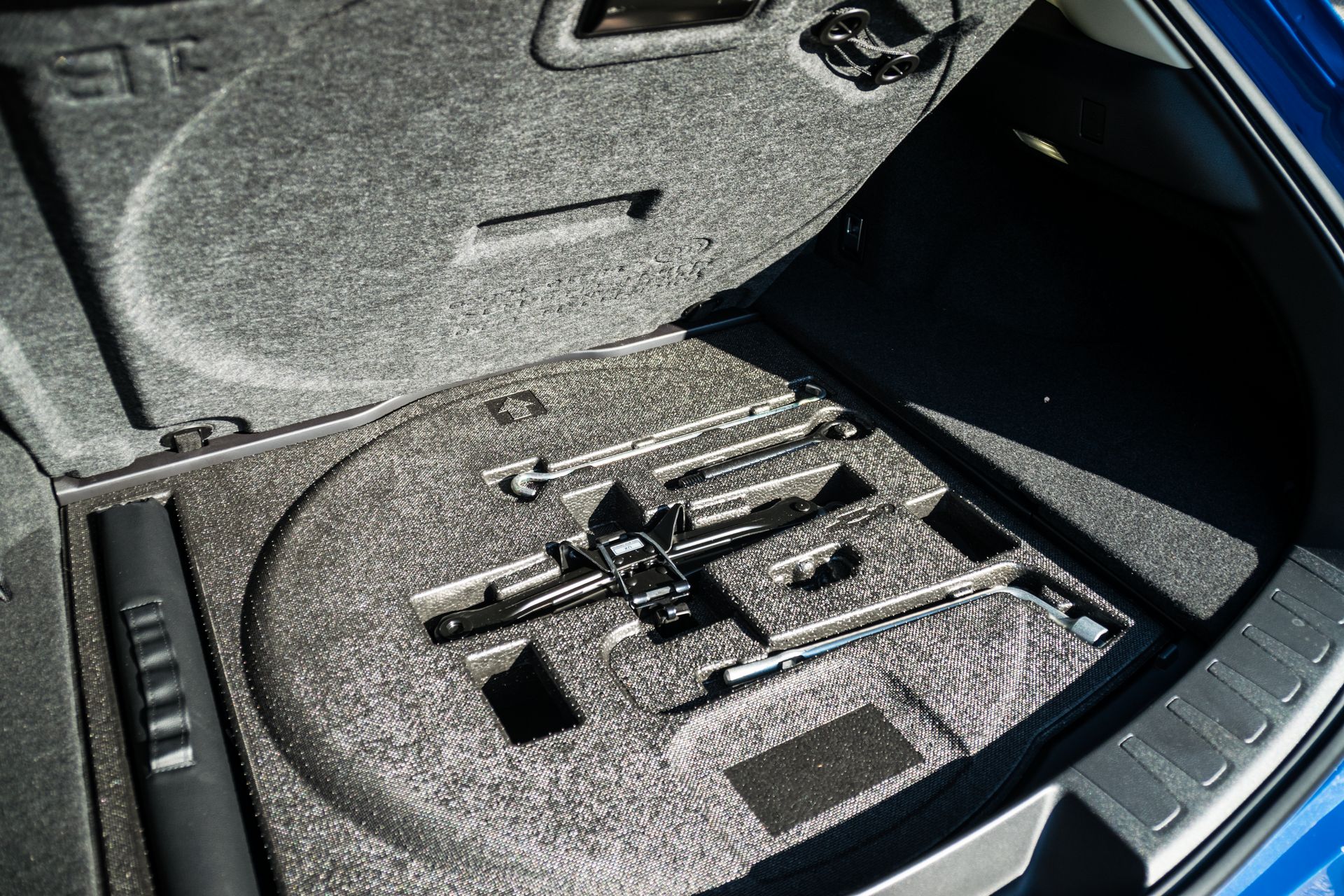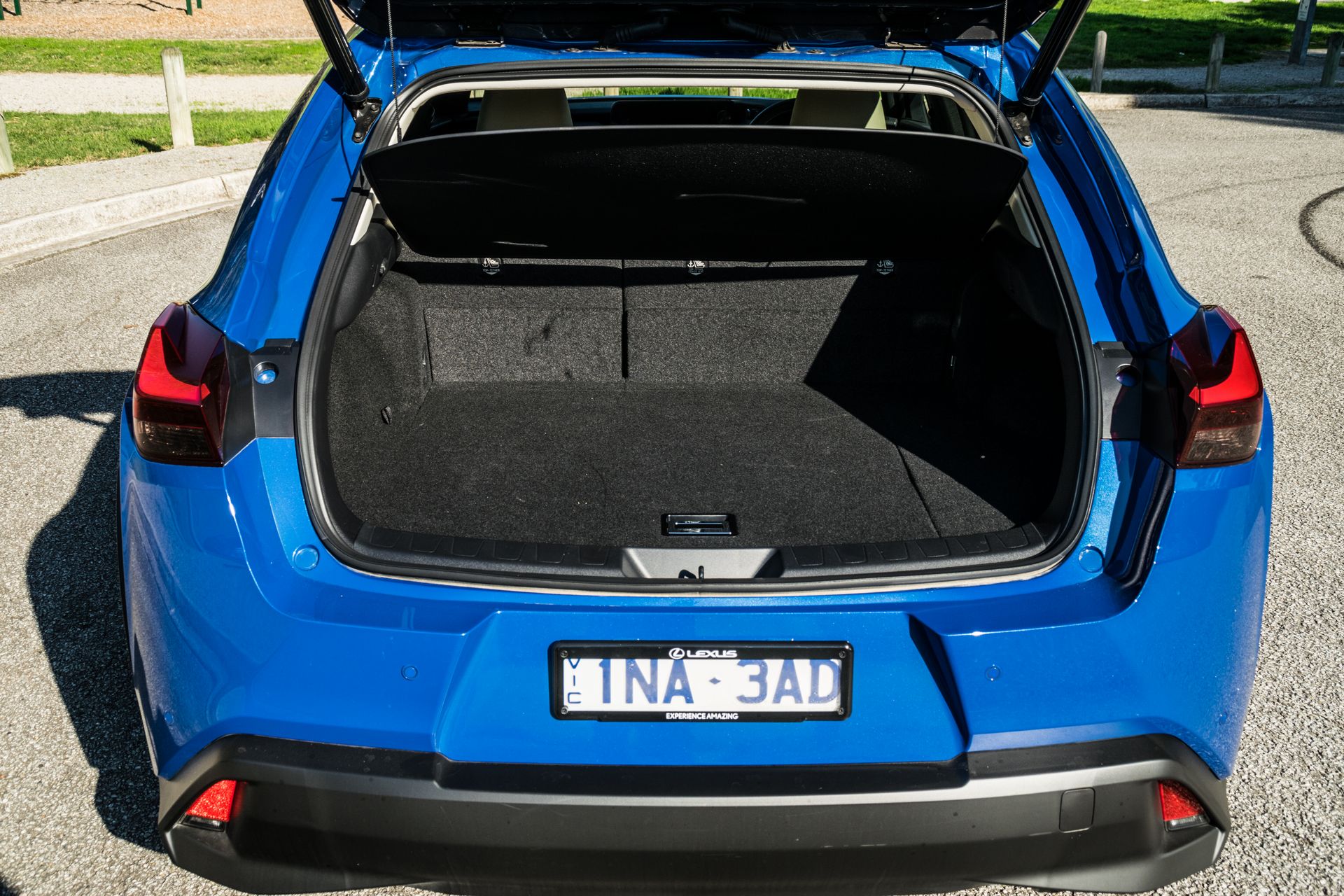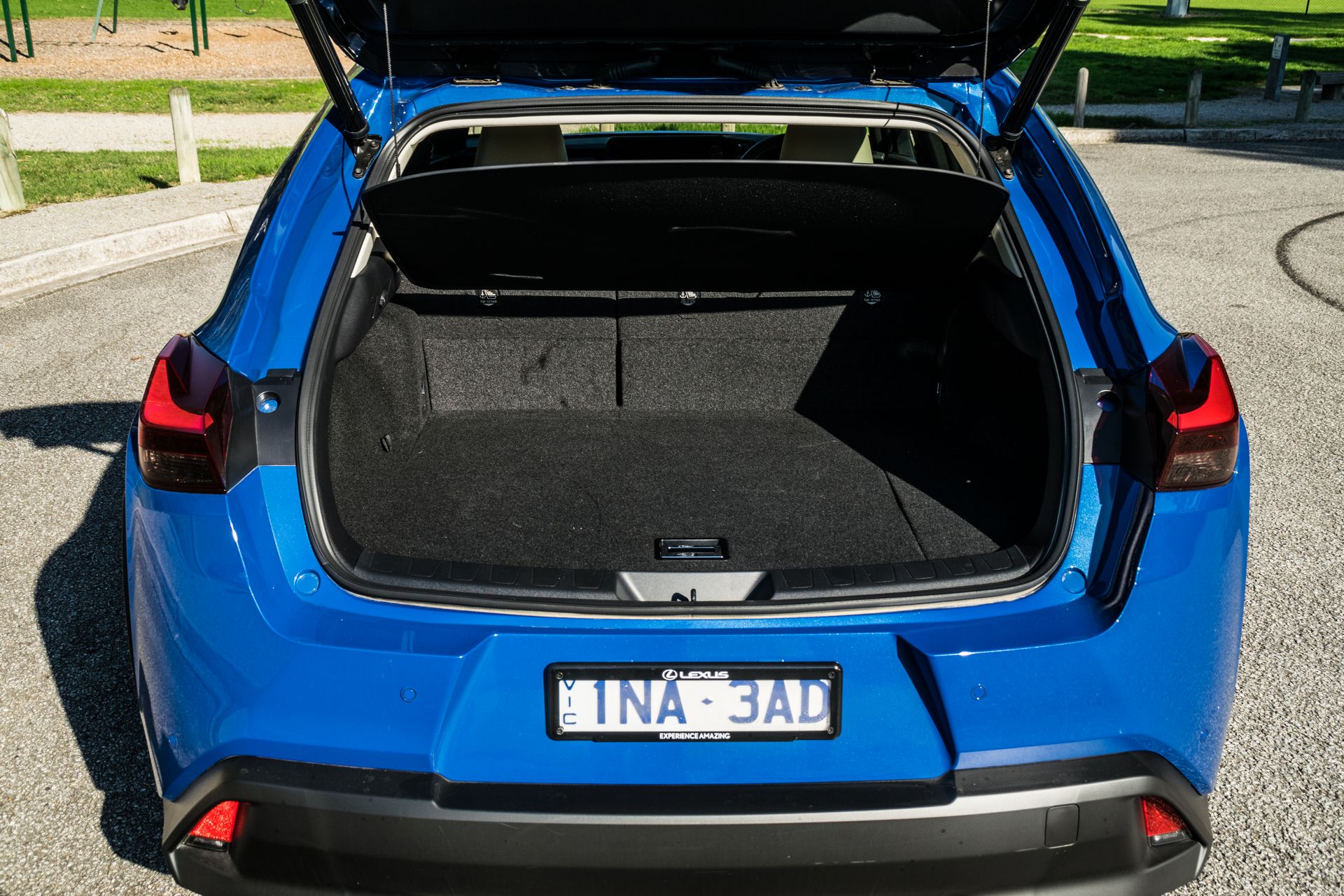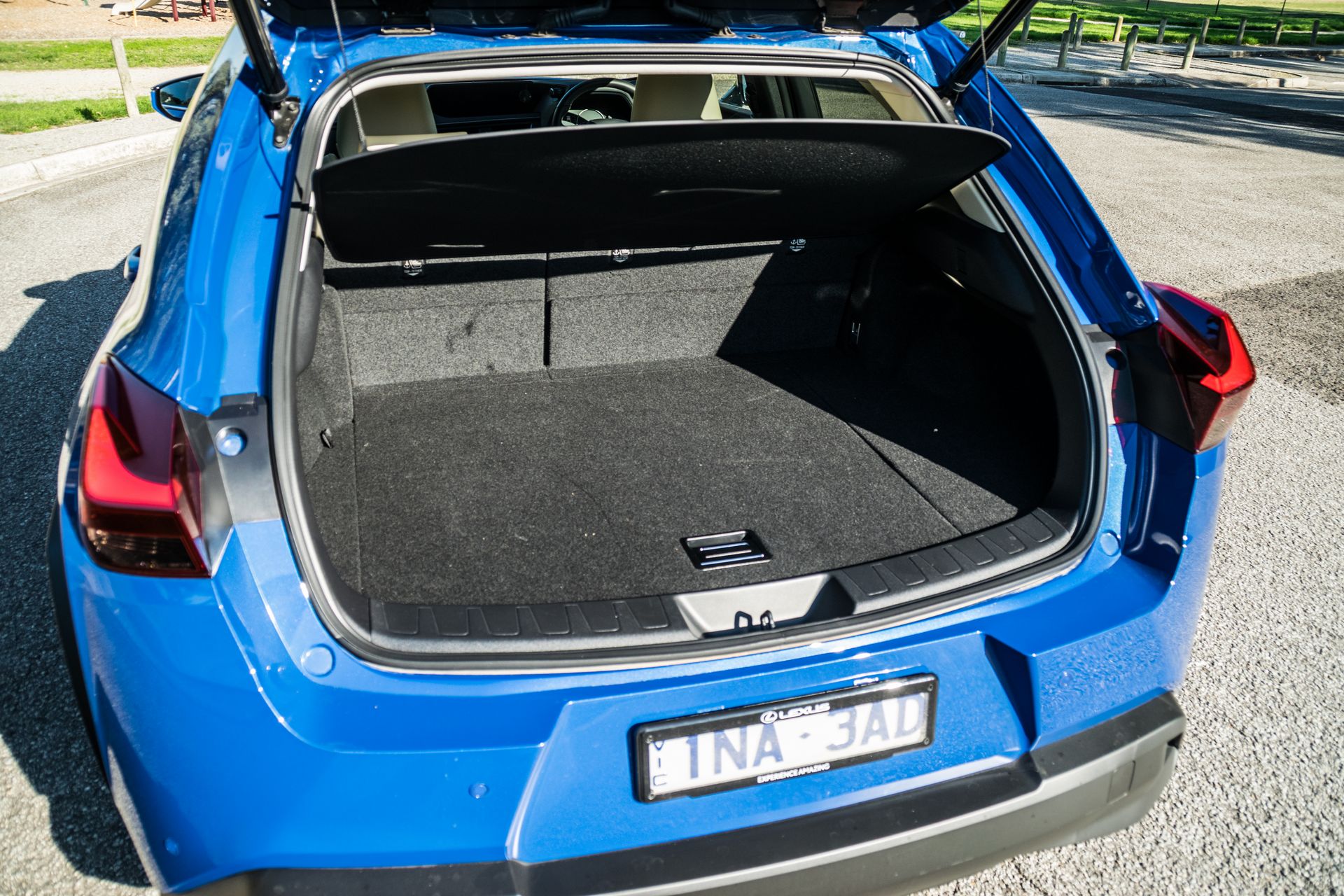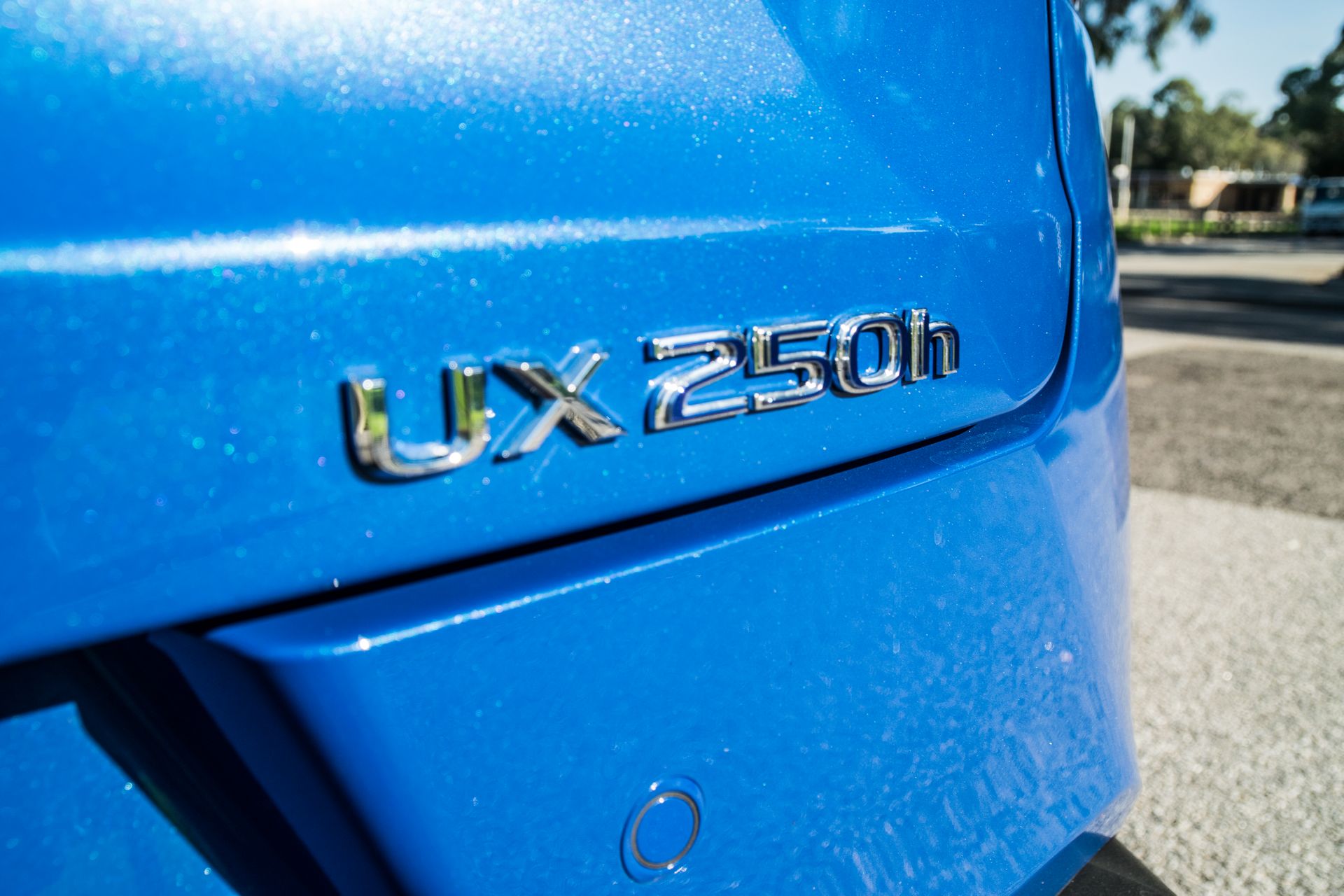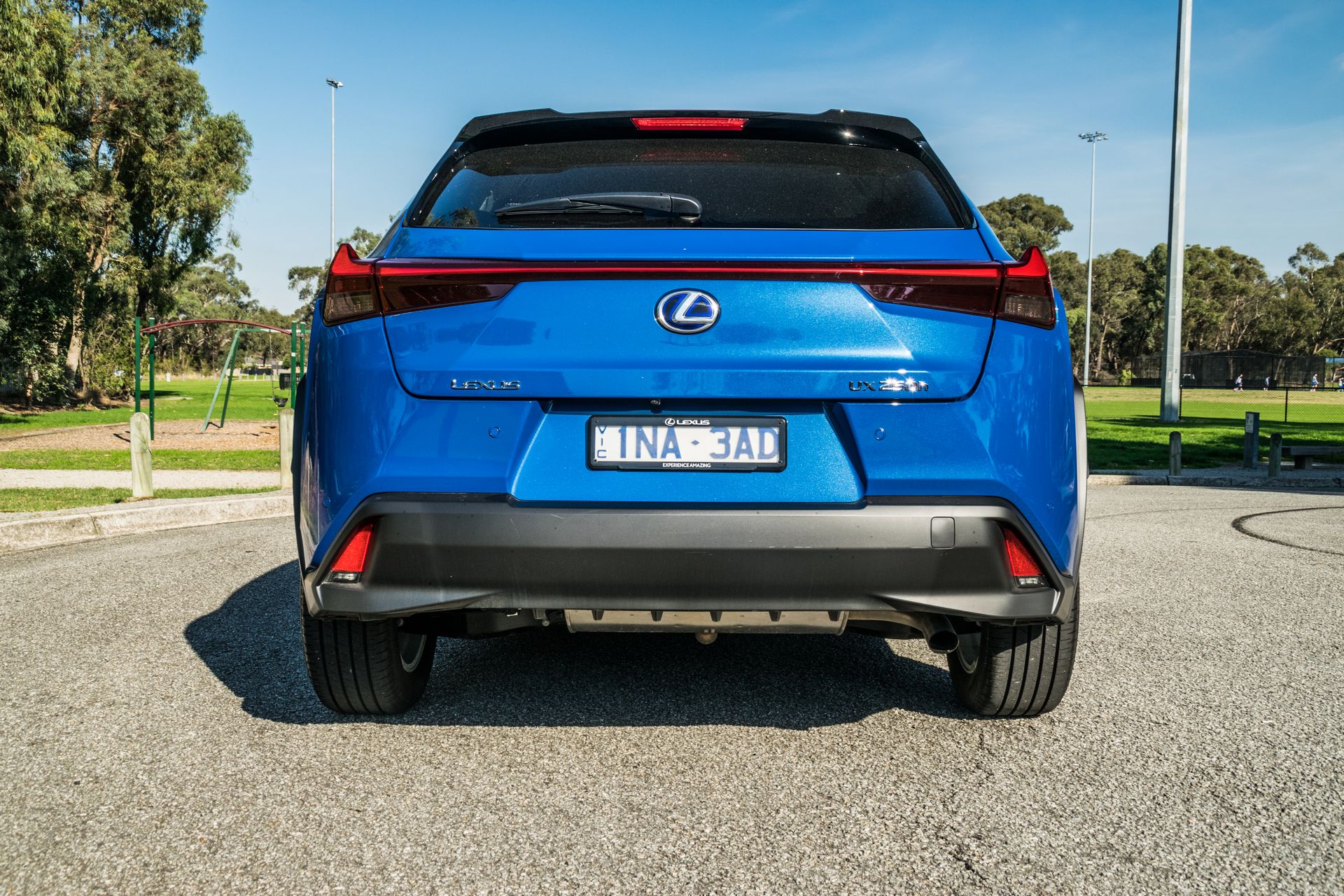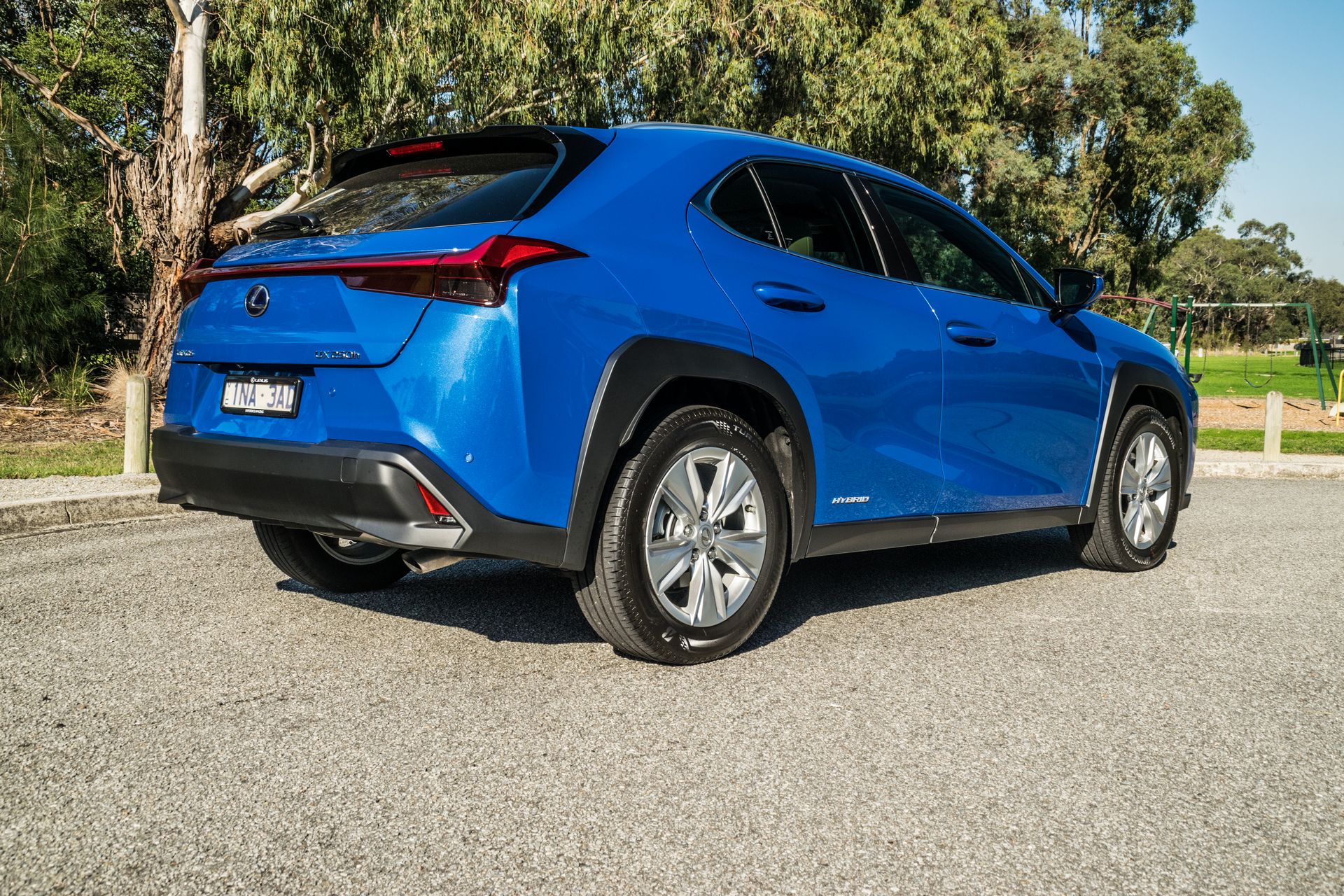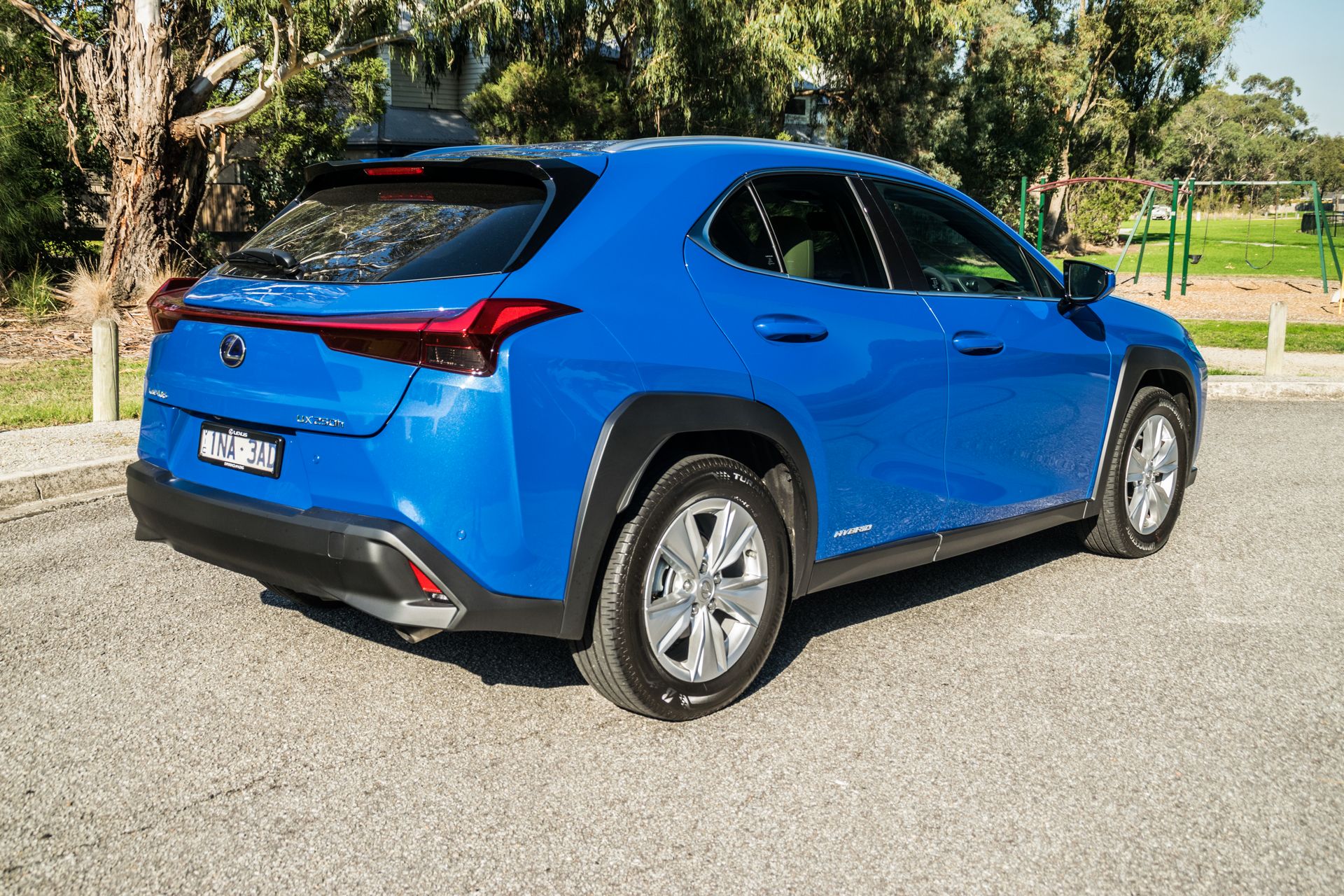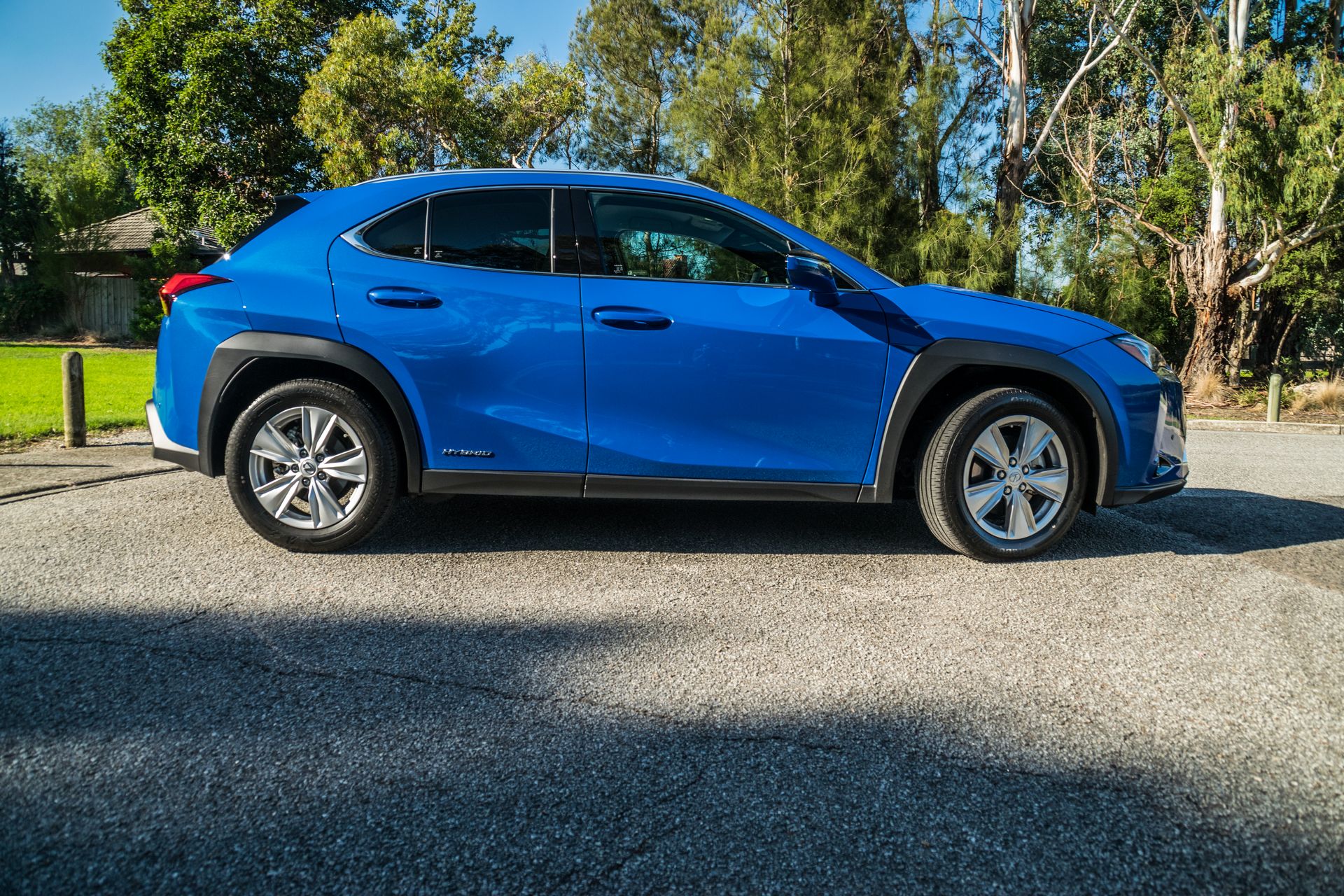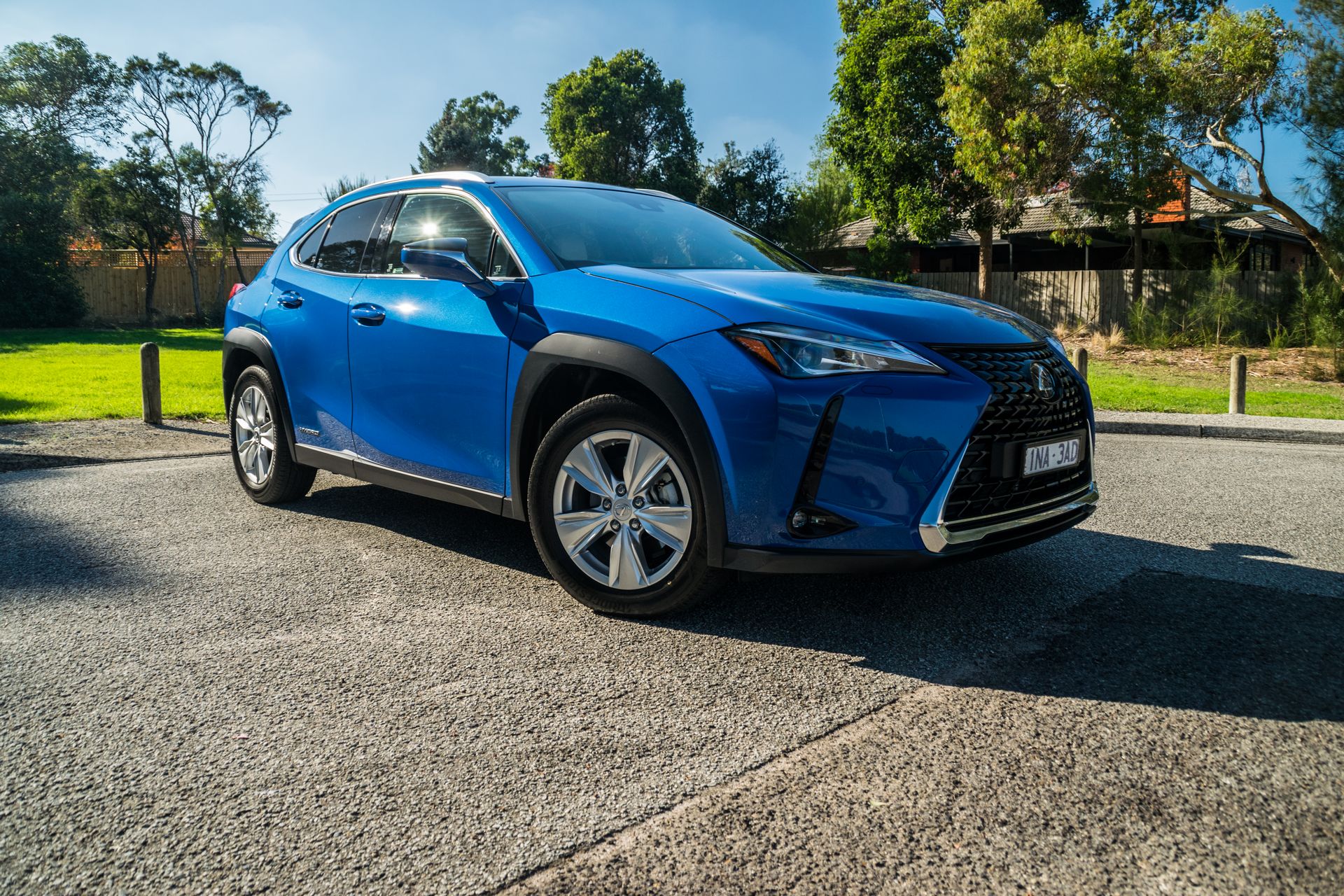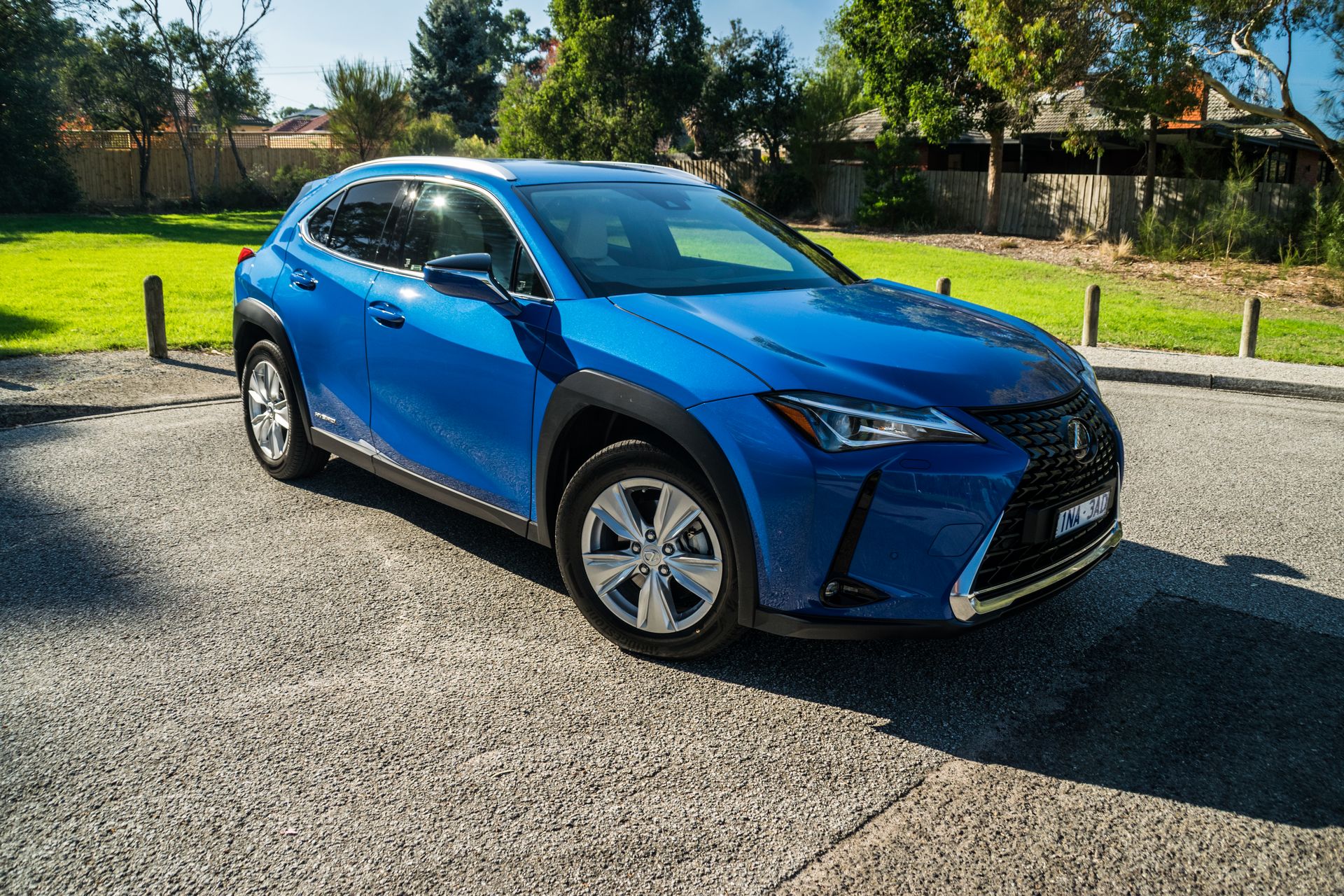The premium subcompact crossover niche is a relatively new, yet popular and lucrative, niche, and no self-respecting manufacturer can afford to not be present with at least one contender. Lexus wasn’t the first to the party, but oftentimes that proves to be an advantage rather than a drawback.
Its offering is the UX, and its raison d’être is to sway customers away from the BMW X2, Audi Q2 and Mercedes-Benz GLA.
Best Looker In The Class?
The first thing which strikes you about the UX is its eye-catching exterior design. There is not a single modern Lexus which has a design which we would label ‘bland’ or ‘boring.’ Instead, they all have character and turn heads. The UX is no different, with a distinctive front fascia dominated by a large black spindle grille and sharp headlights with LED daytime running lights.
The car we recently tested for a week came fitted with a set of silver five-spoke alloy rims which have a rather bland design, which is made even more obvious when compared to the modern exterior. Other noteworthy elements of the exterior include the black plastic wheel arches and the LED light bar which connects the two taillights.
Top Points For The Cabin
While the striking exterior of the Lexus might not be to everyone’s liking, we’re quite confident in saying that the interior will get universal approval. Despite the UX we tested being the entry-level Luxury trim level, it was a very pleasant place to sit as it was outfitted with white leather across the seats – and while we suspect they would be nearly impossible to consistently keep clean, they look good but most importantly, are very soft and supportive.
Second-row space is somewhat cramped but that’s not hardly surprising given the car’s dimensions and overall design. Headroom at the rear is decent (947 mm) and those taller in statue can sit easily in the rear. However, legroom (842 mm) at the rear can be compromised depending on the height of the driver and passenger. For a couple with two young children, the UX has enough room, but once those children reach their teenage years, things could get a little tight.
The dashboard of the UX is perhaps the highlight of the cabin. Lexus has “floating”, piano key-like buttons to operate the climate control system and they are responsive and a joy to use. The infotainment screen is nicely integrated into the dashboard and sitting adjacent to it is an analog clock, a feature present across other Lexus models. Operating the infotainment system requires patience, though, as the company’s touch-pad controller is present and still far from perfect. With practice, however, it does become easier to operate and isn’t a huge concern. A touchscreen would be nicer, though – maybe on the facelift…
Perhaps our favorite aspect of the interior is the center console storage compartment with a lid that can be opened up like a book from the left (by the passenger) and from the right (by the driver) thanks to the inclusion of a single hinge at the front of the console. It’s a nice little touch that shows attention to detail.
Loaded With Tech, Not Skimping On Space
Lexus loaned us a UX250h in Celestial Blue with the Enhancement Pack. That’s a $1,500 option which is well worth the money as it includes a Qi wireless phone charger, alloy scuff plates, rear privacy glass and an electric tailgate which you can operate by waving your foot under the rear bumper.
Speaking of the tailgate, it opens up to a rear cargo area that, even by class standards, is small. If the rear seats remain in their upright position, the boot can support 324 liters (85.5 U.S. gallons), slightly less than the 333 liters (87.9 gallons) of the Corolla ZR Hybrid we recently tested. It is worth pointing out that the boot does support a temporary space-saver spare wheel (much handier than a tire repair kit) as well as a host of tools, a warning triangle, and a first-aid kit.
Likes To Travel, Loves To Corner
Beneath the bold bodywork sits Toyota’s TNGA modular architecture, and this gives the vehicle a rather sporty feeling during everyday driving and corners are something you can actually look forward to rather than just navigate around. The soft and supple ride adds to the enjoyment of threading the car through turns, even if most owners won’t indulge in that very frequently.
We found the UX to really shine on the highway and during long journeys. The Lexus Safety Sense+ technology package comes standard and includes practically everything, from autonomous emergency braking with pedestrian and daytime cyclist detection to lane-keeping, traffic sign recognition, blind-spot monitoring, rear cross-traffic alert, a reverse camera with parking sensors, and auto high-beam functionality.
Systems like lane-keeping assist and radar cruise control are becoming increasingly common across the industry, but the UX has one of the easiest-to-use and most accurate systems we’ve used, better than those found in some more expensive vehicles a class or three above. With lane-keeping assist enabled, the car stays in the center of its lane without fuss and minus a few blunders while we were behind the wheel, does give you a strong sense of confidence.
Teaching Lessons In Hybrid Tech
Power is provided by a 2.0-liter petrol four mated to a hybrid system consisting of a coaxial electric motor and a nickel-metal hydride battery to deliver a combined 131 kW (175 hp), allowing for a sprint to 100 km/h (62 mph) in 8.5 seconds. Mated to this powertrain is a CVT transmission which, despite lacking any character, gets the job done.
The Corolla ZR Hybrid we reviewed a little while back also featured a hybrid powertrain, albeit with a 1.8-liter four-cylinder. That powertrain was impressive, but the one in the Lexus is far superior.
When you set off, the car typically runs exclusively on all-electric power but when the engine fires up, you could be excused for thinking you’re still being powered solely by electricity. The engine is whisper quiet at low revs, and on a few occasions, it took us quite some time to actually work out whether it was operating or not. When you stab at the throttle, it does come into life and speed builds at a pretty impressive rate. Three driving modes (Eco, Normal and Sport) are available; they are self-explanatory and vary the resistance level of the power steering while also adjusting throttle and transmission response.
Fuel consumption officially sits at a mere 4.5 lt/100 km, but during our time with the car, we didn’t see it drop below 5.0 lt/100 km. Which is still pretty impressive, as official figures are never replicated in the real world and our driving consisted mainly of short trips.
One gripe we do have with the powertrain setup is that the Luxury model comes exclusively with front-wheel drive. We suspect the electric all-wheel drive system of higher-spec grades would add some extra security to the driving experience and please buyers. Front visibility is good, thanks largely to the thin A-pillars. However, there is quite a large blind spot due to the enormity of the C-pillars. But hey, that’s the sacrifice you make for style.
In Australia, the UX250h Luxury we tested was priced at $47,950 and in the U.S., it starts at $39,200. The looks may not be for everyone but anyone shopping for a small premium crossover should put the Lexus near the top of their list.



